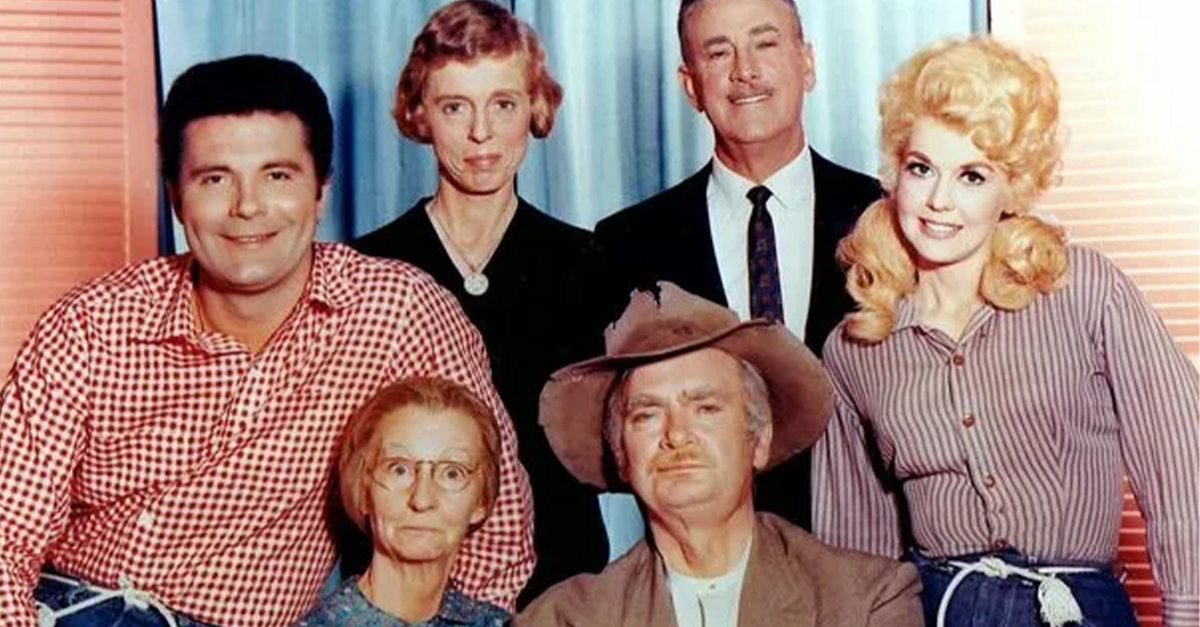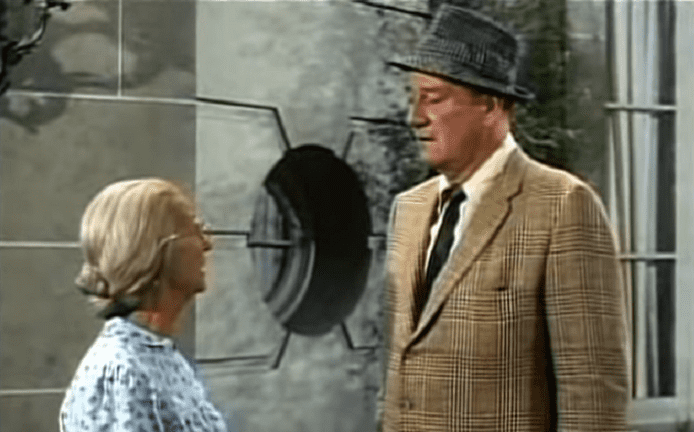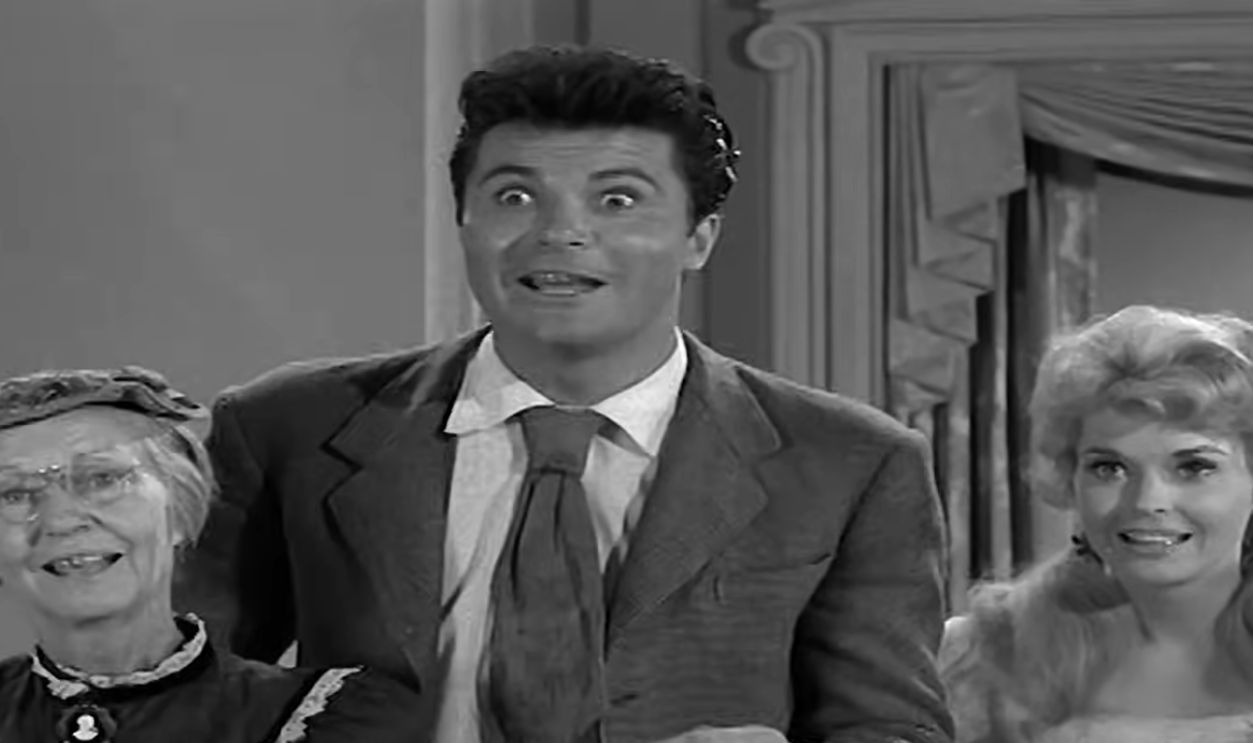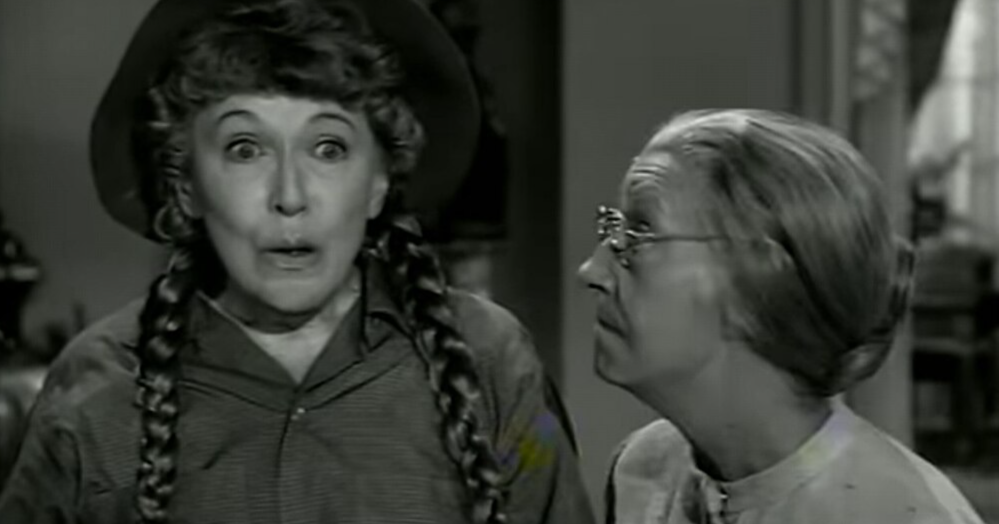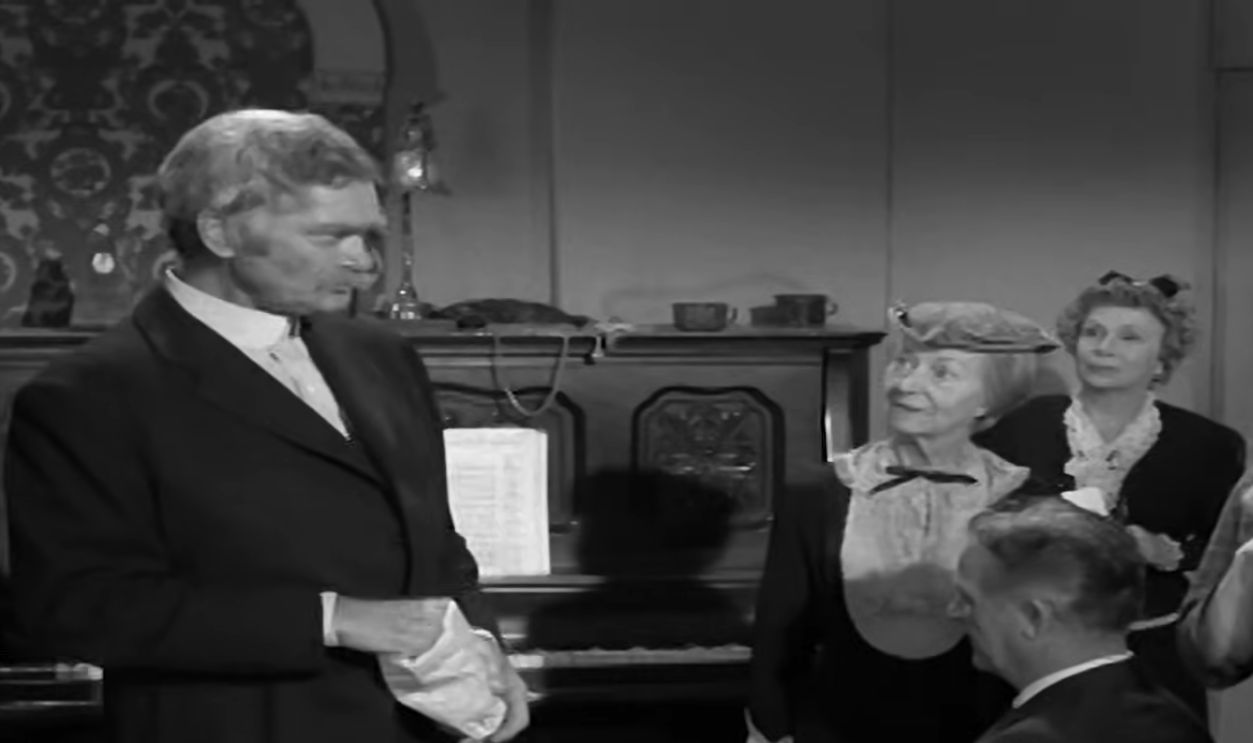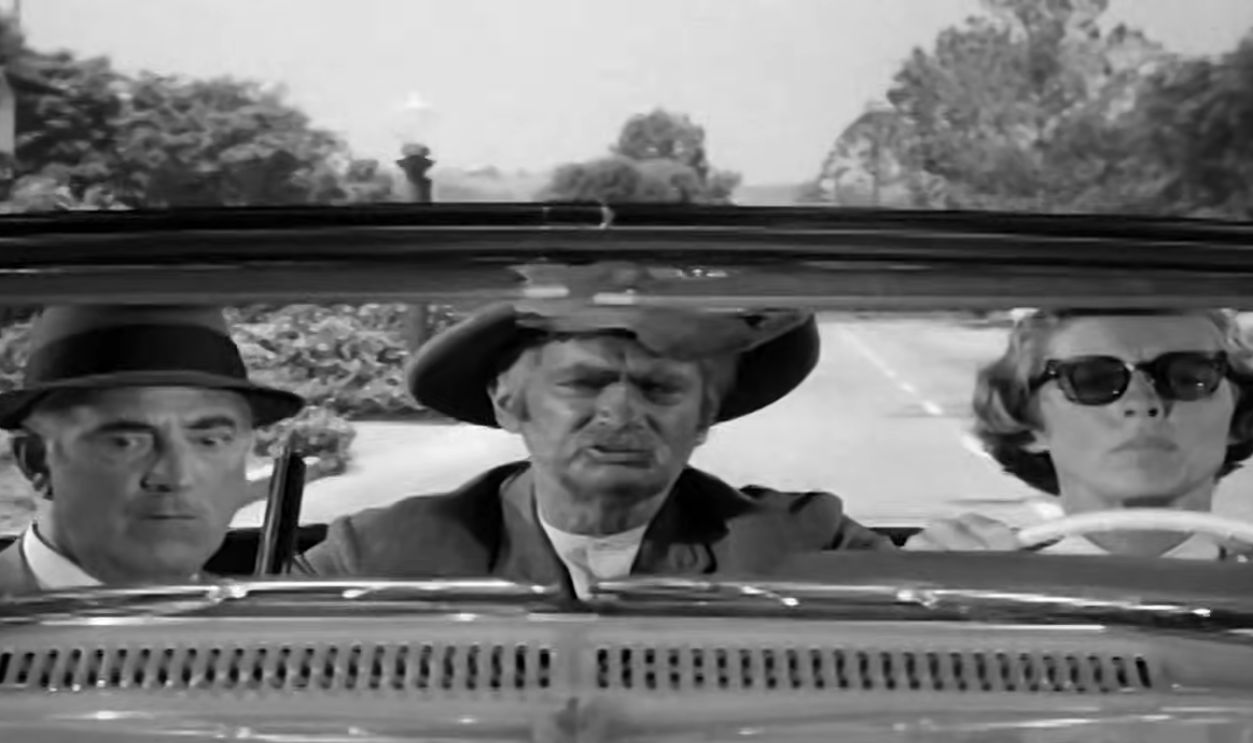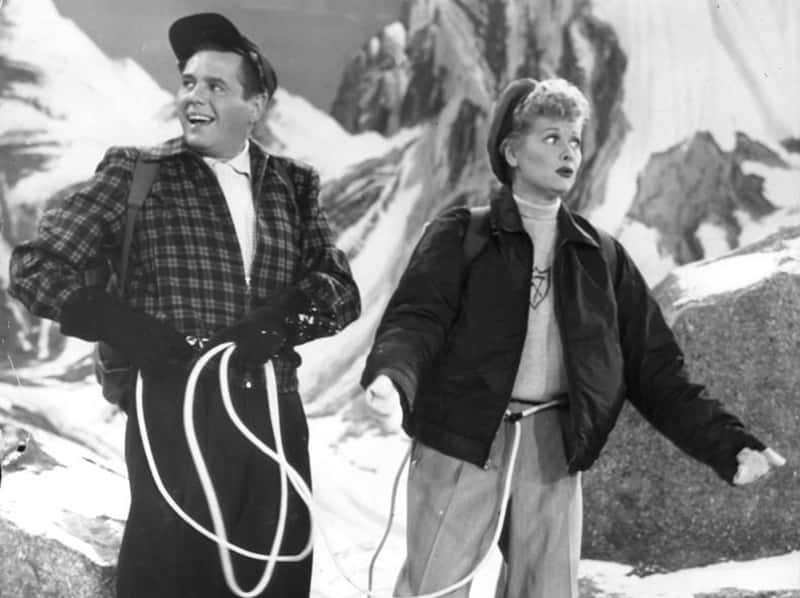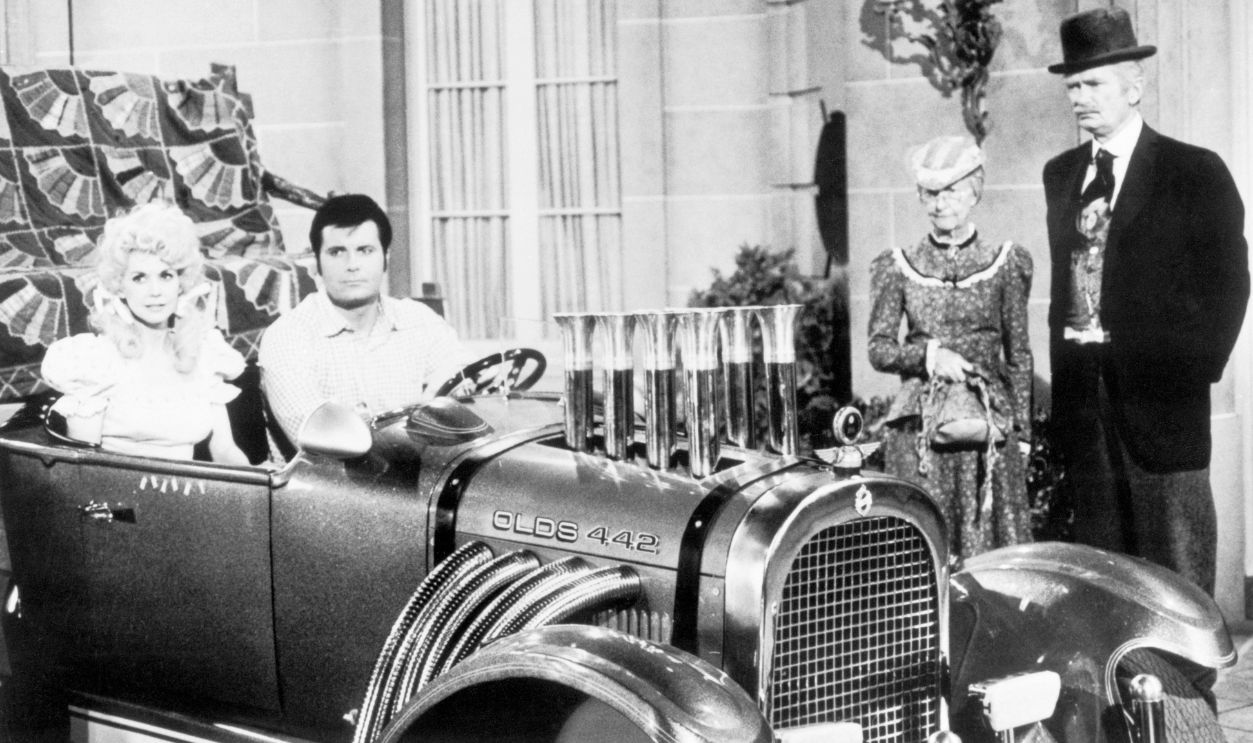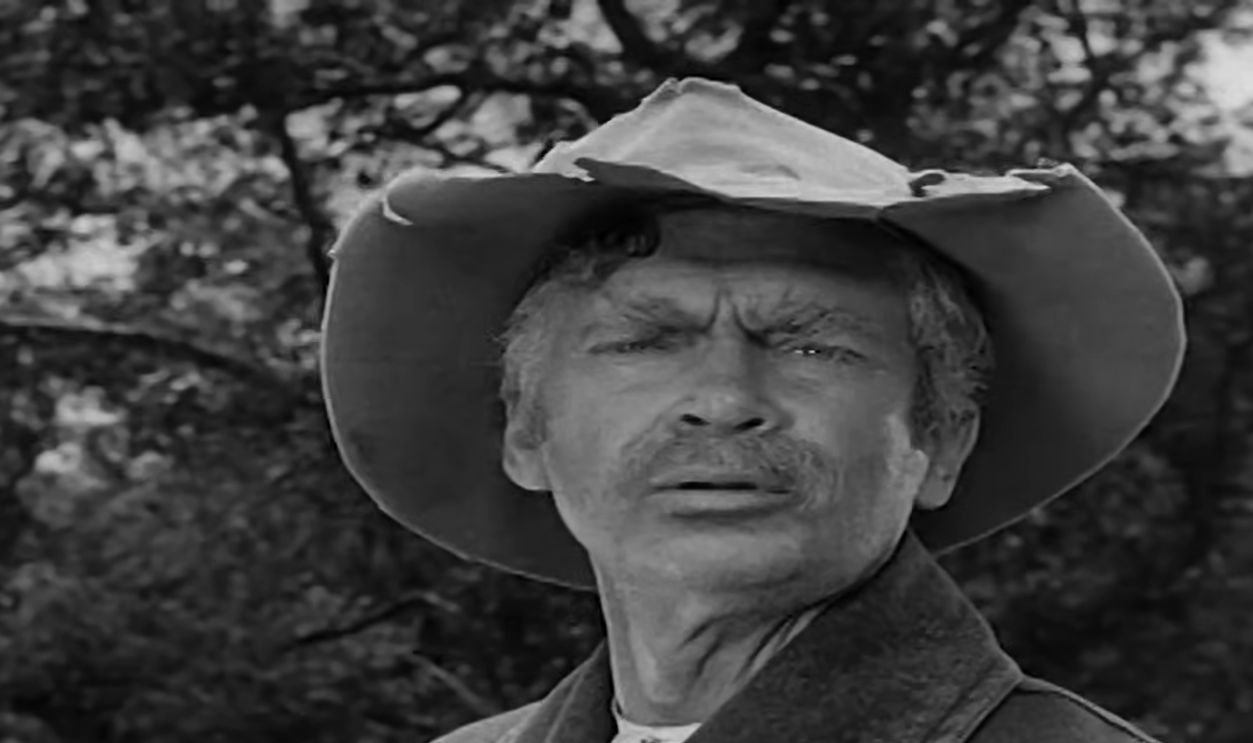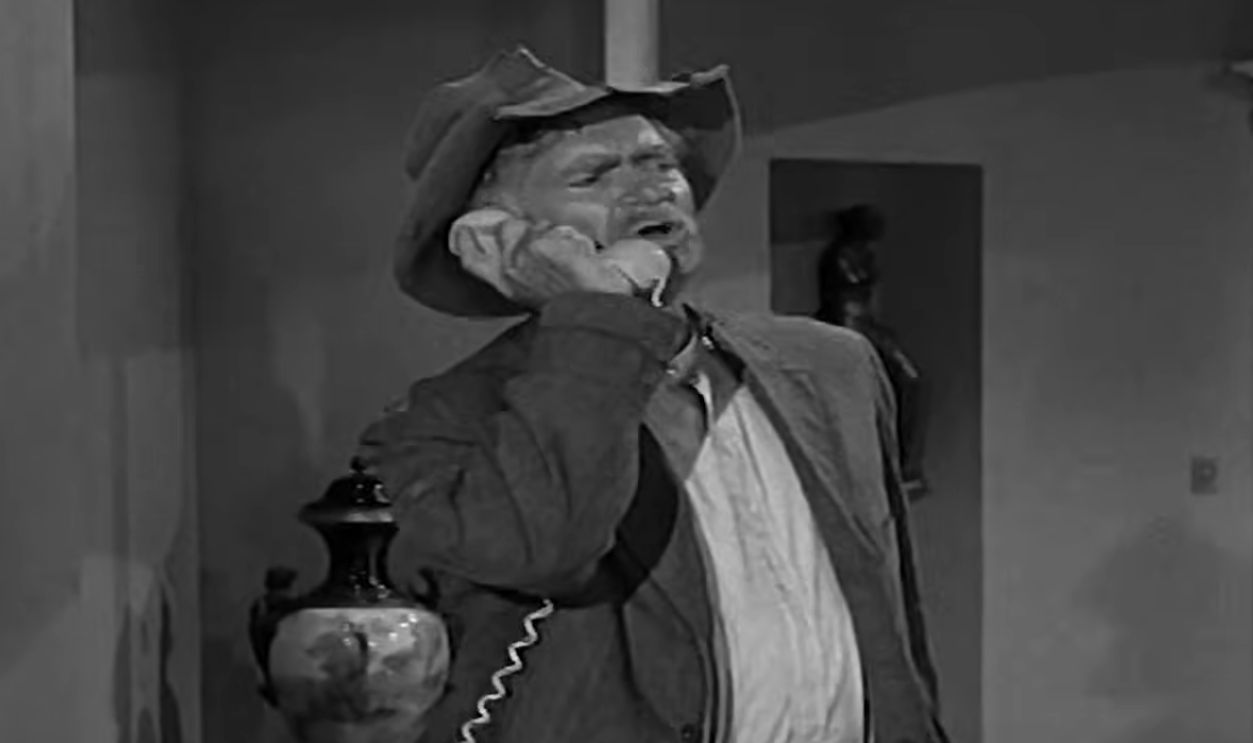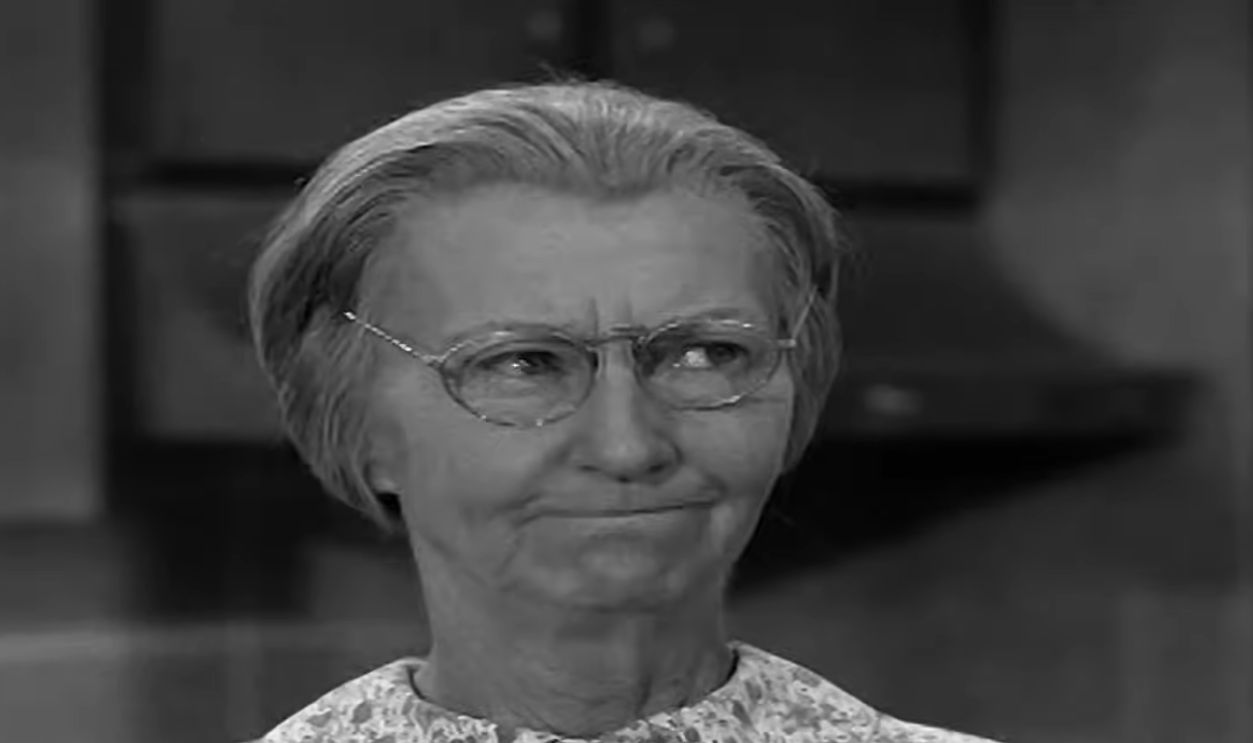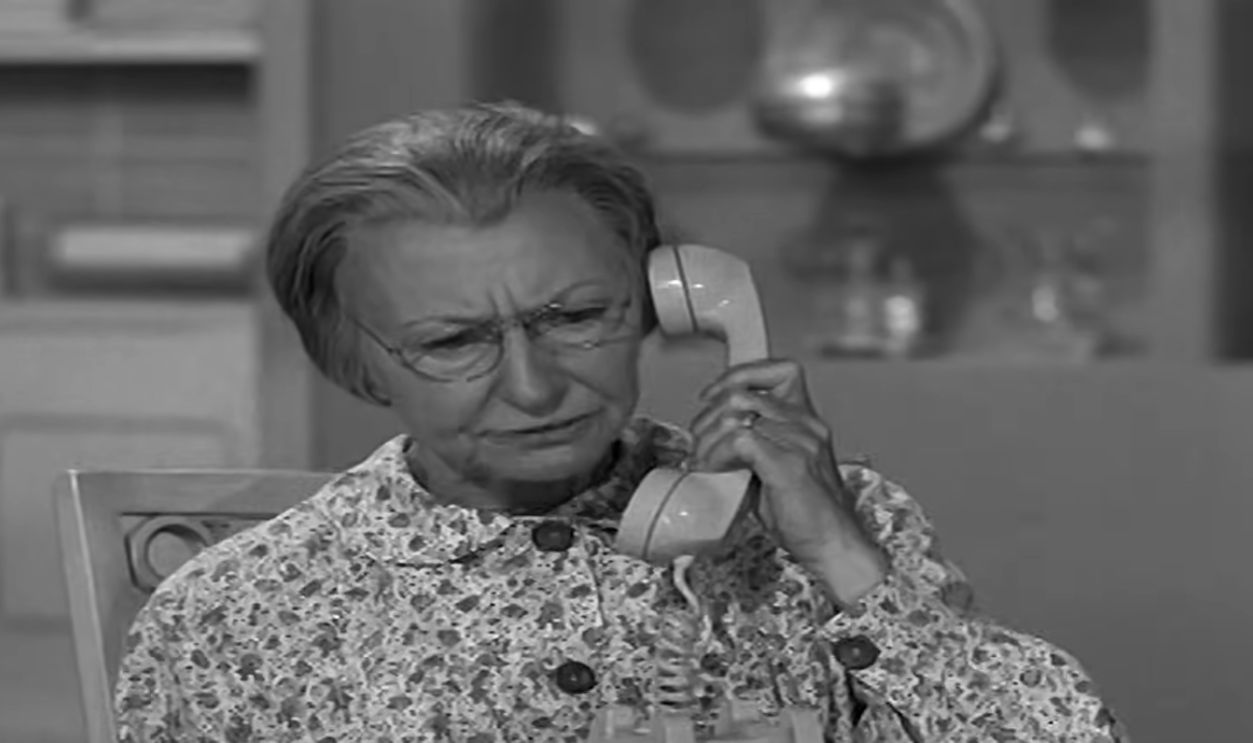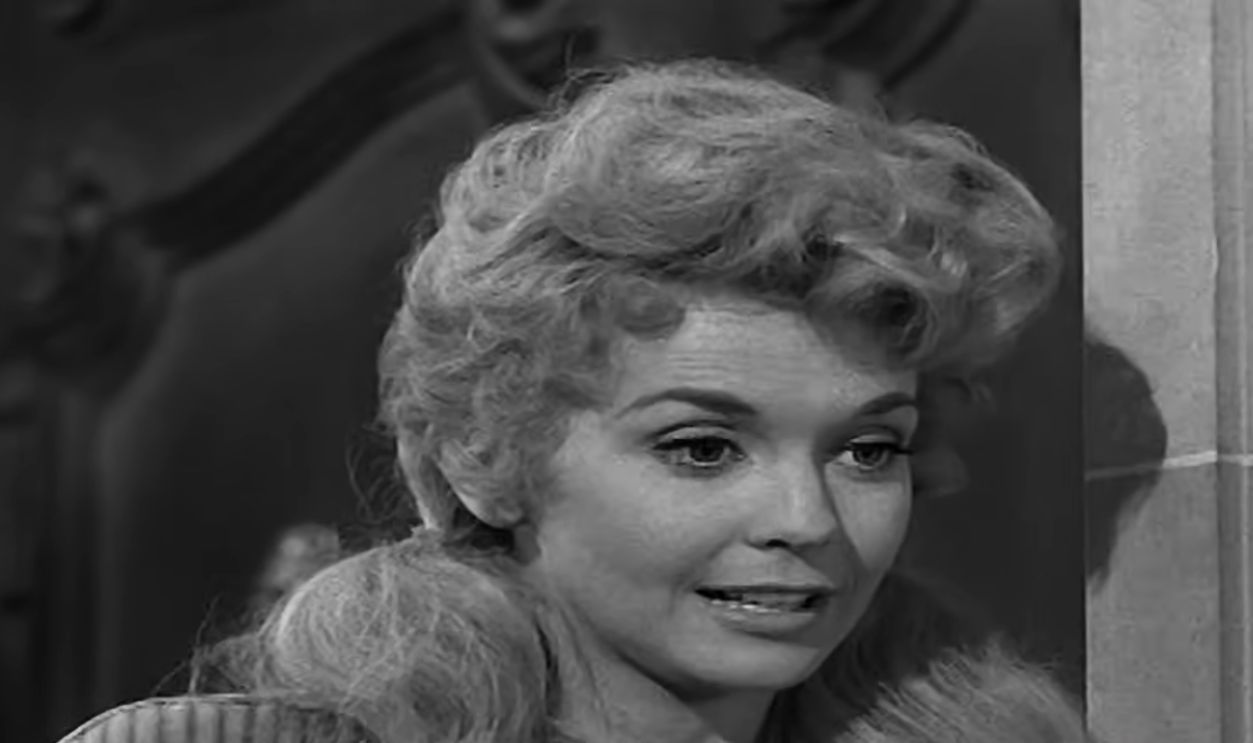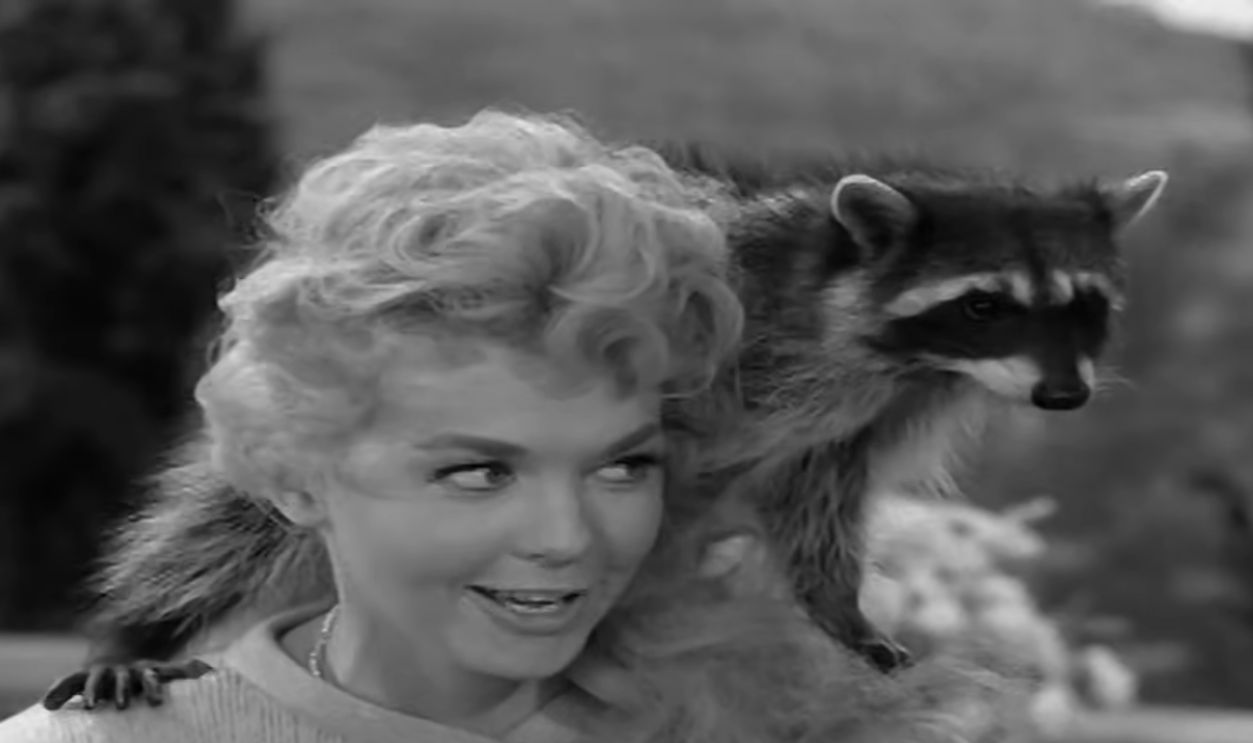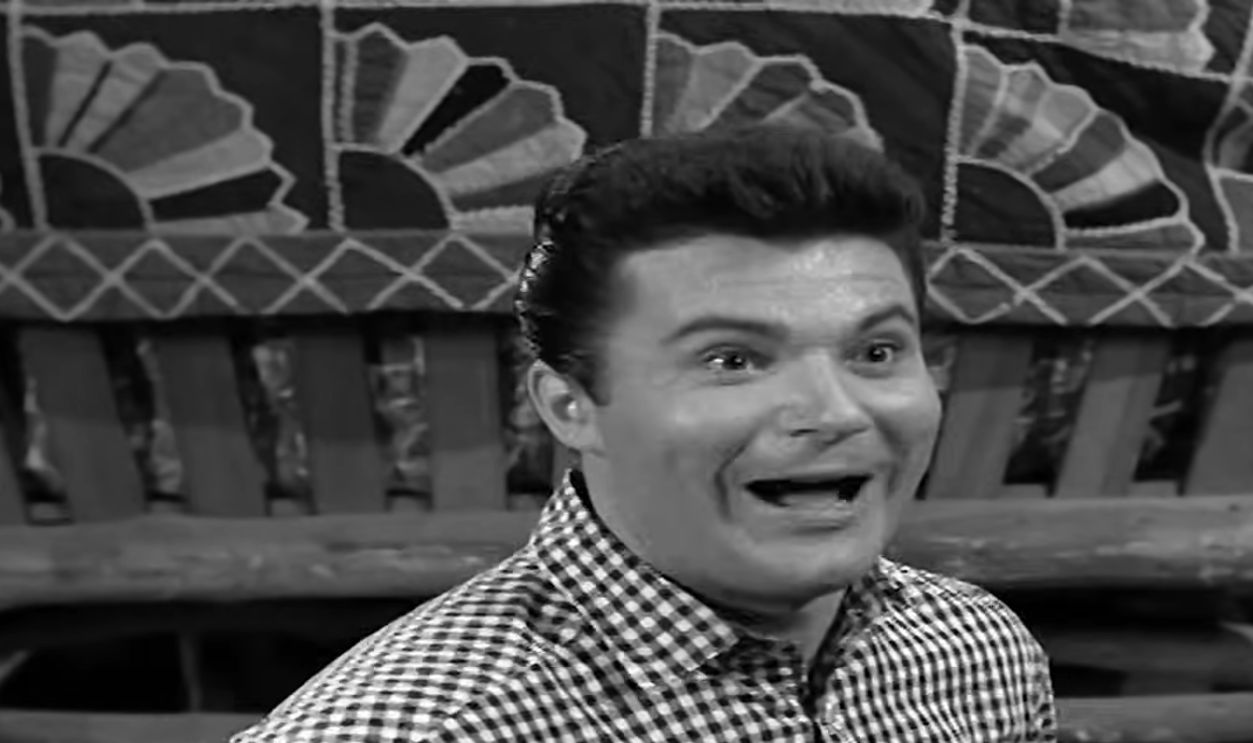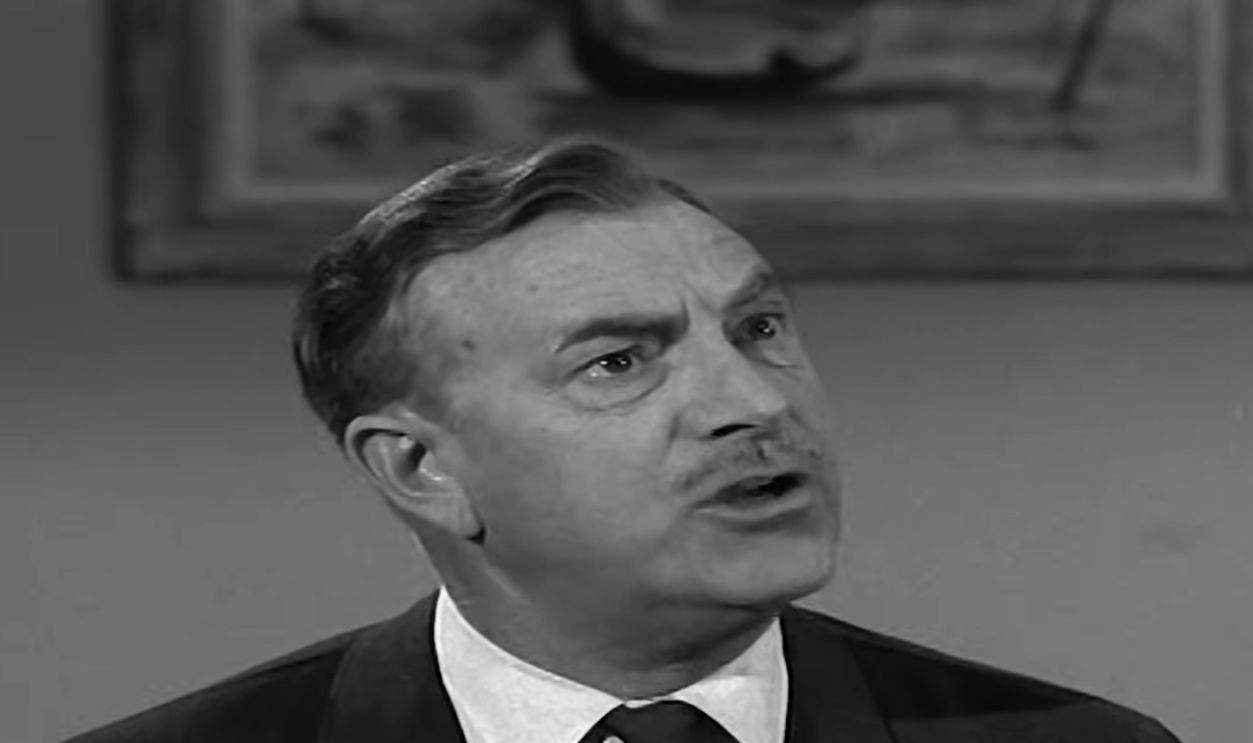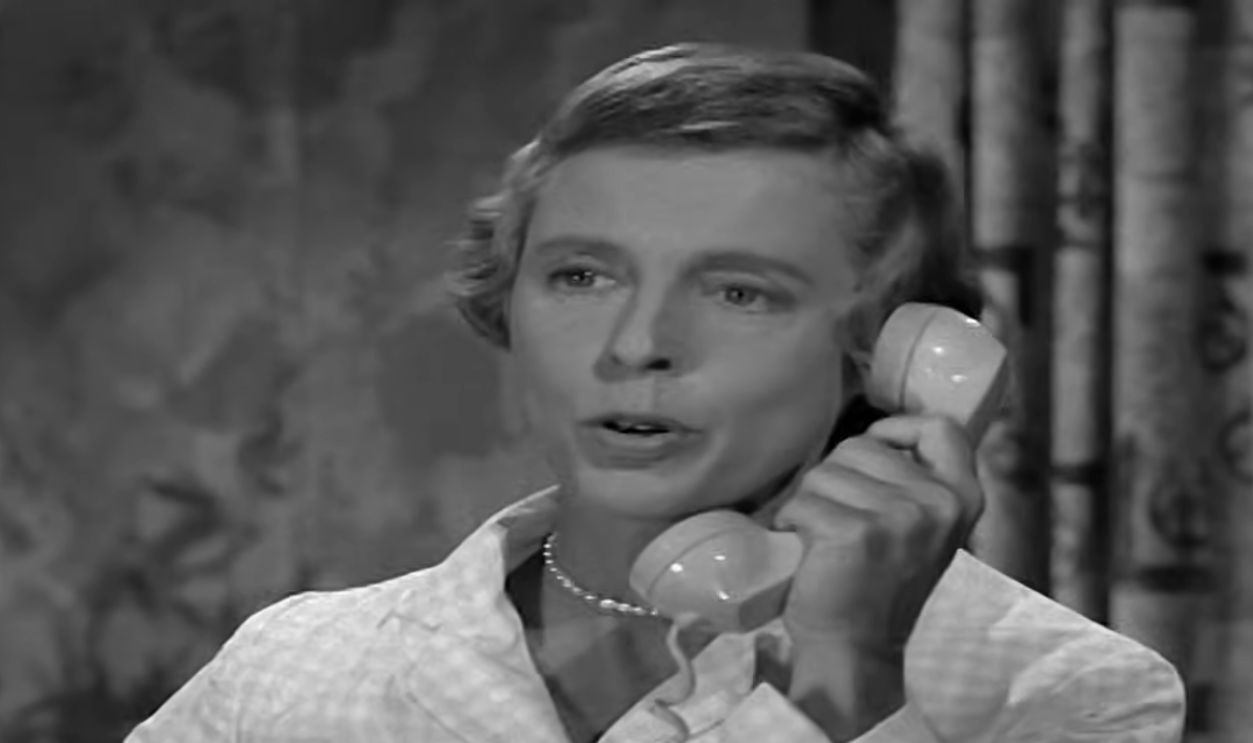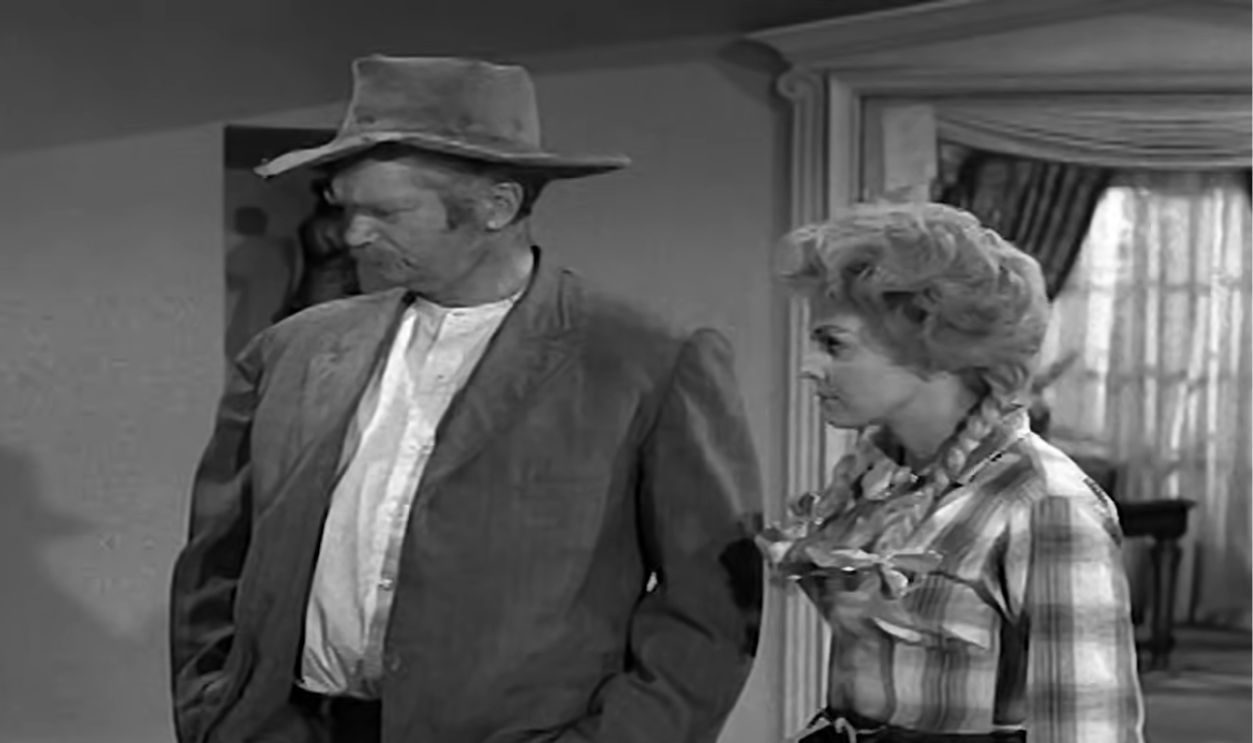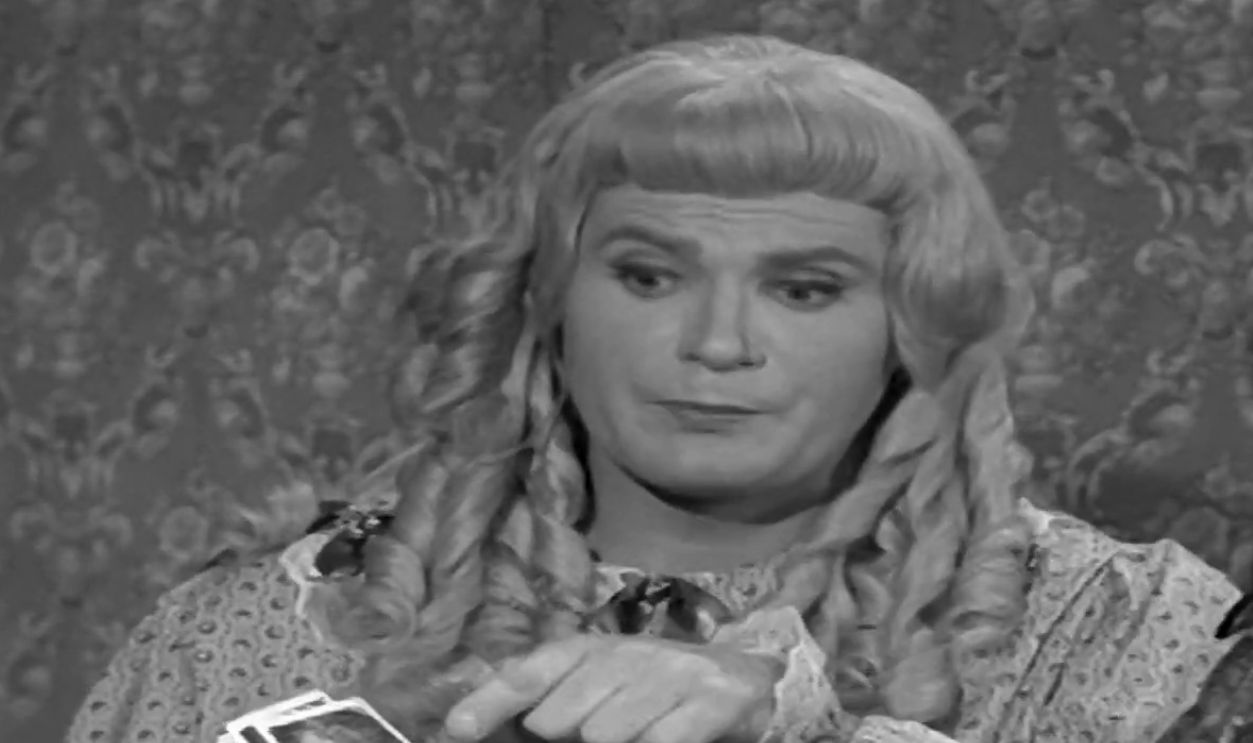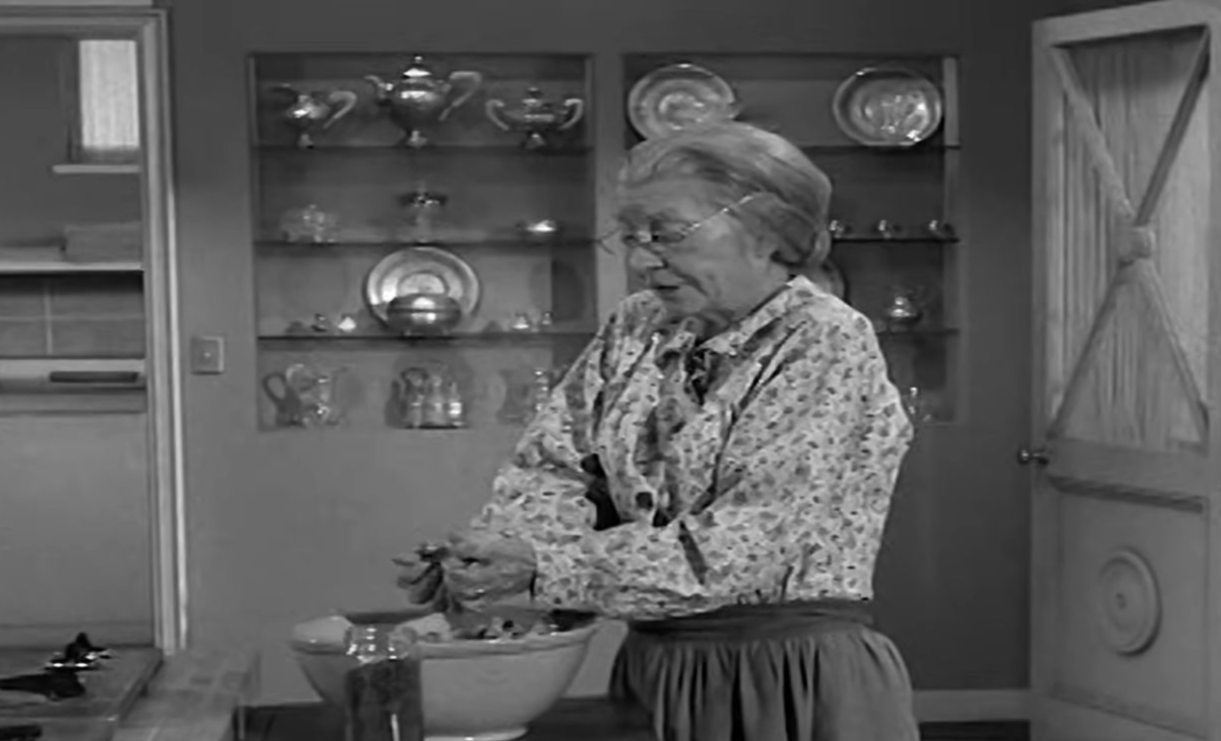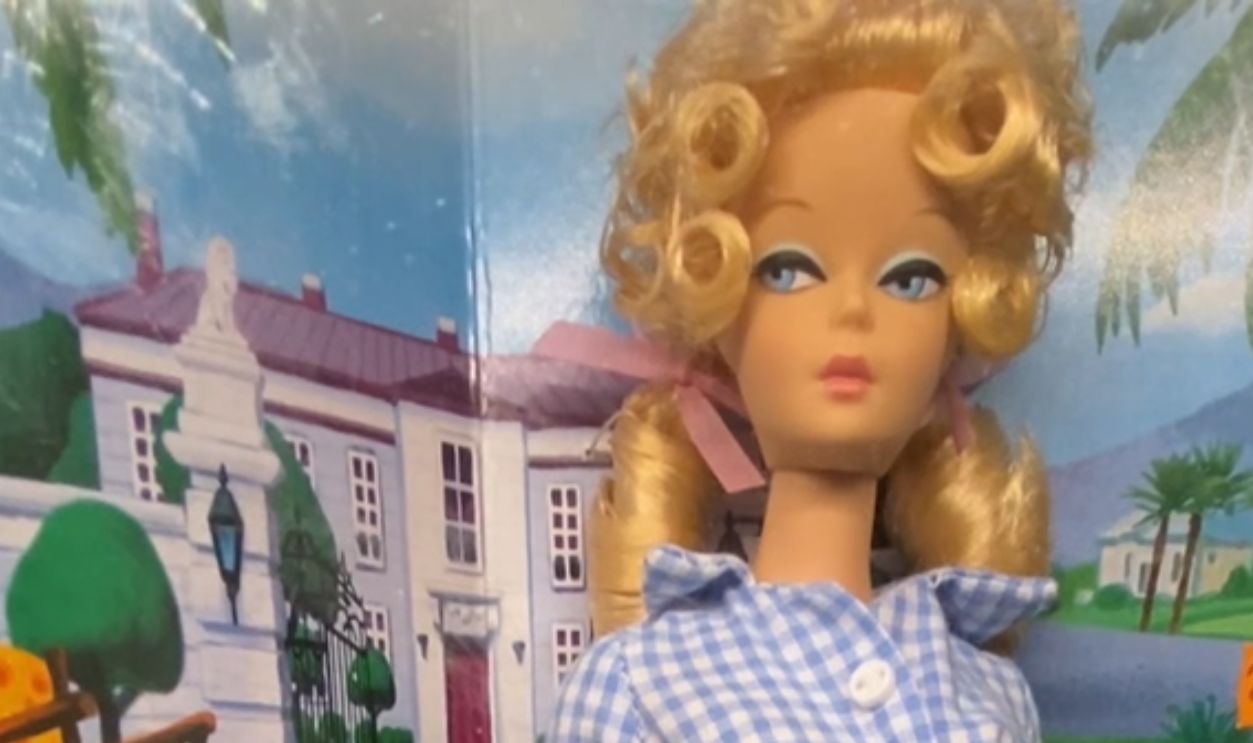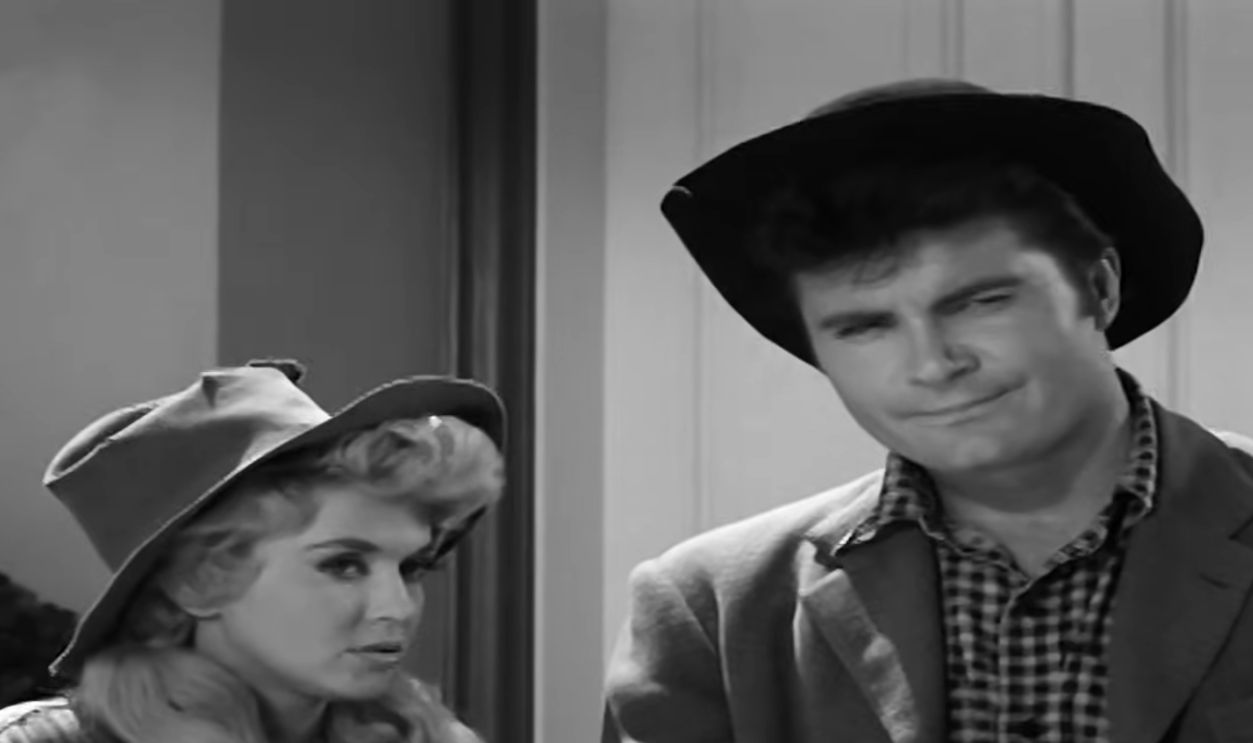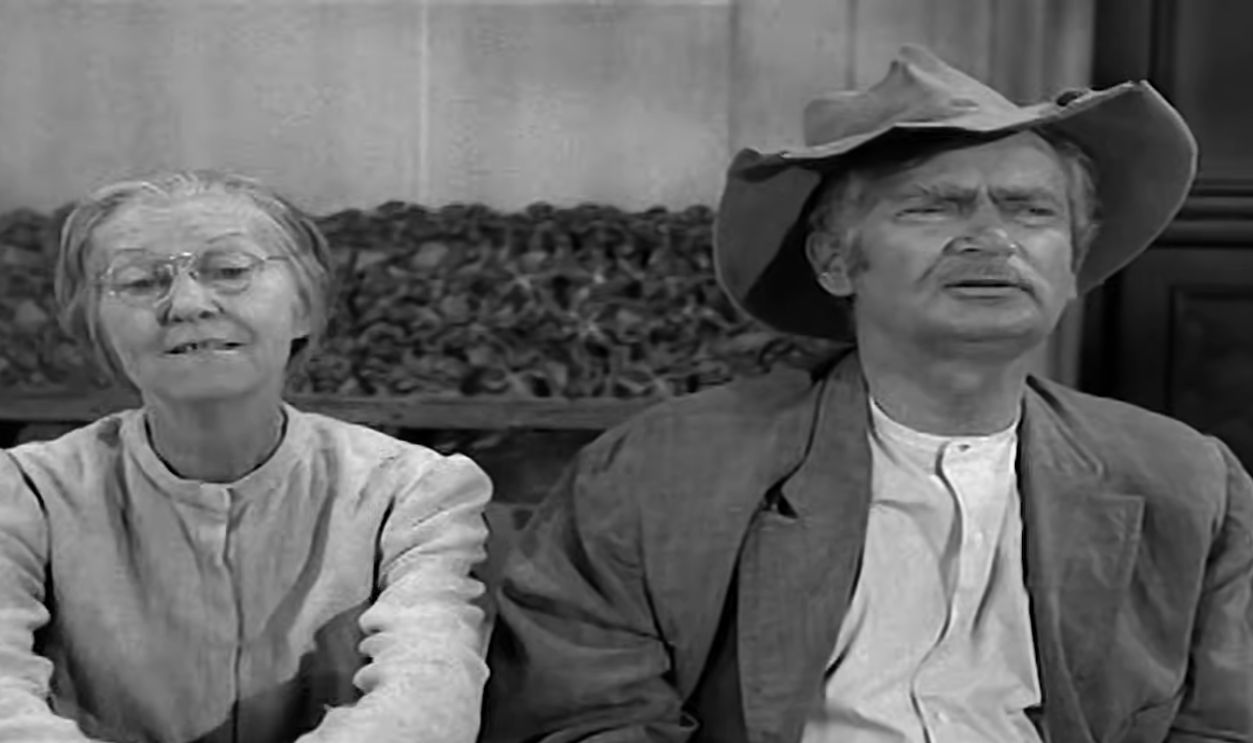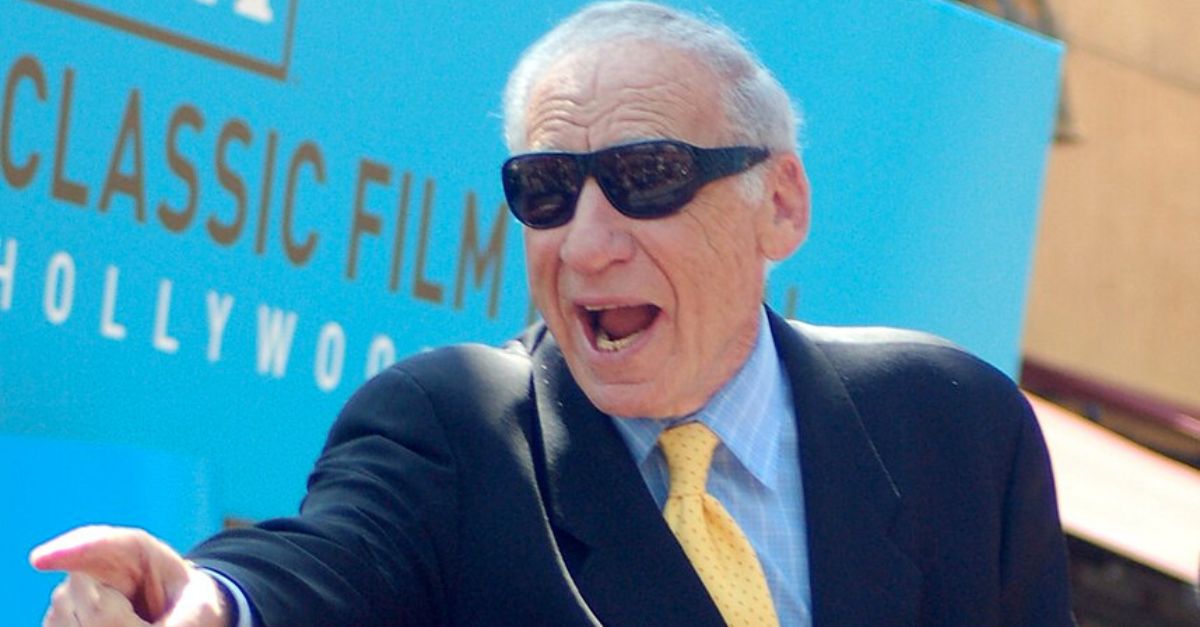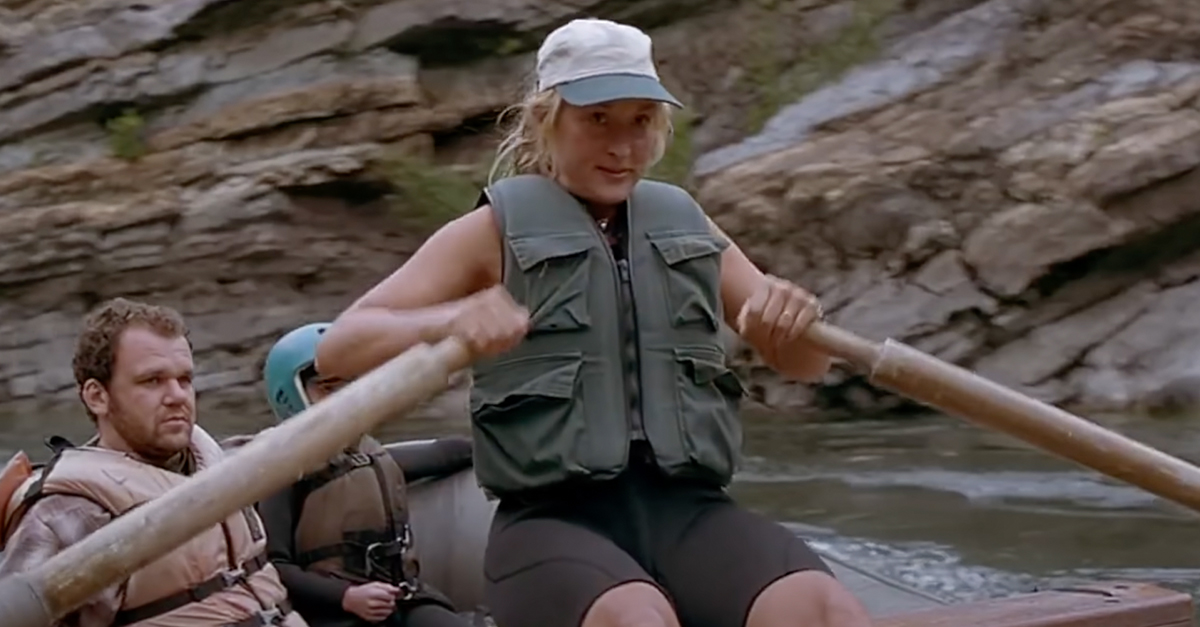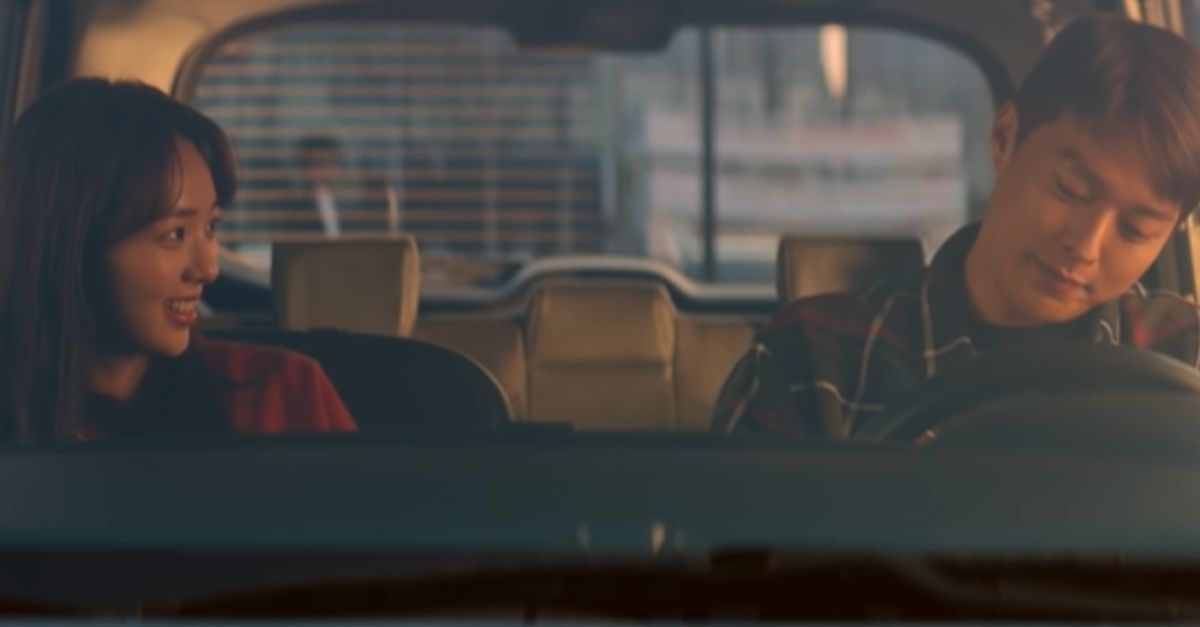A Behind The Scenes Look At The Beverly Hillbillies
If you’re a certain age, you know the next line to this TV theme: “Come and listen to a story 'bout a man named Jed…”. The Beverly Hillbillies was a 1960s rural-themed sitcom about a poor backwoods family from the Ozarks who strike it rich in oil and move to Beverly Hills. A fish-out-of-water comedy, the show lasted nine seasons until it was canceled in the infamous “rural purge” on American television networks.
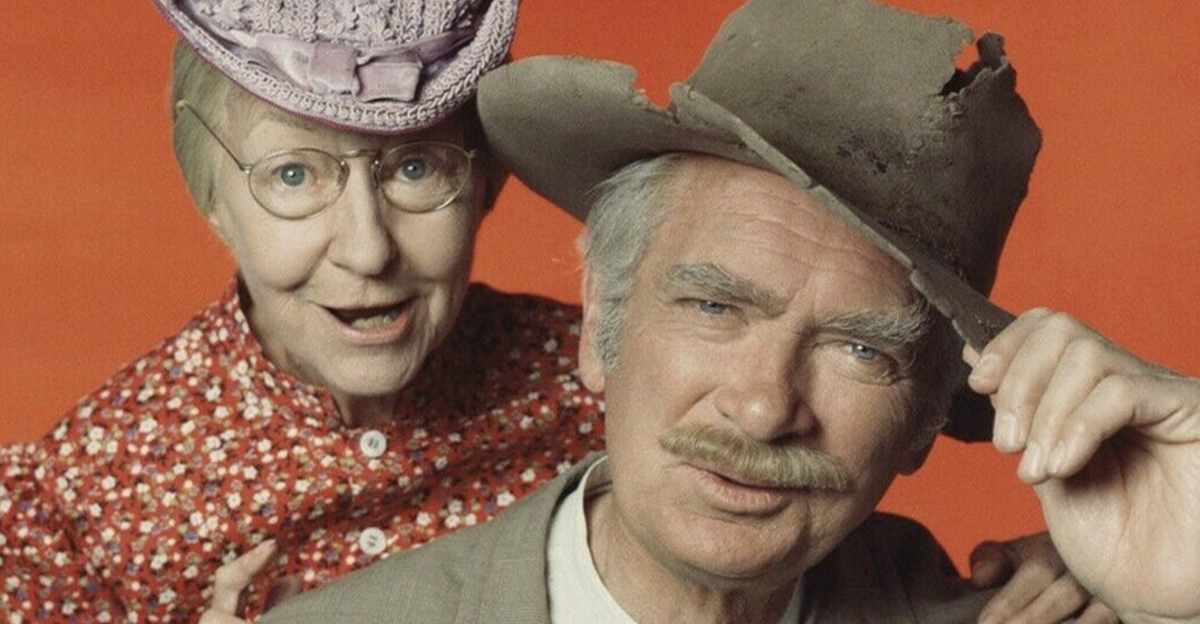
The Rural Purge
Throughout its nine-year run and with 274 episodes in total, the ratings for The Beverly Hillbillies were solid. They were the number one show for the first two seasons and after that they were always in the top 20, although by their ninth season from 1970-1971, they slipped below the top 30. However, the show continued to win the ratings in its timeslot.
The Rural Purge
Much of 60s television was dominated by rural-themed comedy, much of it on CBS. By the beginning of the 1970s, there was a push for more sophisticated comedy like The Mary Tyler Moore Show and All in the Family, and in 1971, CBS dramatically canceled all of its rural shows, including The Beverly Hillbillies, Green Acres, and Mayberry RFD, as well as the variety show Hee Haw, which did continue in syndication.
 CBS, The Beverly Hillbillies (1962–1971)
CBS, The Beverly Hillbillies (1962–1971)
The Rural Purge
In many ways, The Beverly Hillbillies was a time capsule for its nine-year run. Debuting in 1962, the idea of rubes moving to the rich enclave of Beverly Hills was a funny concept, and that contrast between backwoods and West Coast luxury continued throughout its run. Meanwhile, the 1960s was a time of societal upheaval and major cultural shifts and by the time the show left the air in 1971, the television landscape was completely different from The Beverly Hillbillies’ folksy humor.
Southern Stereotypes
Hillbilly and Southern stereotypes have long been fodder for comedies. The reach of The Beverly Hillbillies, however, meant that those stereotypes were on display weekly in American homes, not to mention the show’s rural contemporaries such as Green Acres and Petticoat Junction. The exaggerated depiction of a family from the Ozarks as naive (to the point of not knowing what a swimming pool is) reinforced a stereotype already ingrained in American culture.
 The Beverly Hillbillies | Season 2 Episode 16 | The Giant Jack Rabbit by Wild West TV
The Beverly Hillbillies | Season 2 Episode 16 | The Giant Jack Rabbit by Wild West TV
Southern Stereotypes
The Southern reputation for being backward was emphasized in many of the programs with rural themes yet the shows all remained popular, even in the US South. A big part of that is the sympathetic portrayal of the Clampetts; yes, they were rubes, but they weren’t the other Southern stereotype of the racist sheriff or the Klansman. Jed Clampett, despite his humble and uneducated upbringing, was actually intelligent, ethical, and kind-hearted; he was just unfamiliar with much of what Beverly Hills, and the larger American culture, had to offer.
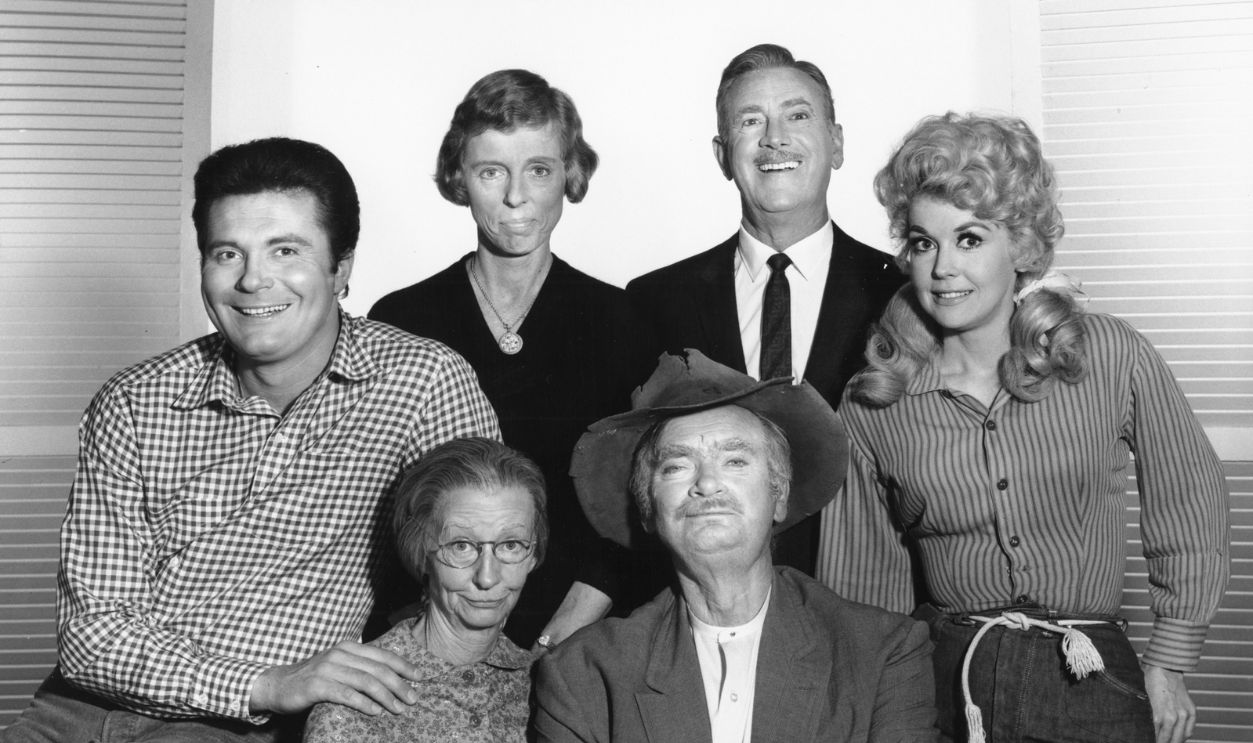 Michael Ochs Archives, Getty Images
Michael Ochs Archives, Getty Images
Southern Stereotypes
This positive representation explains why the show was so popular in the South. Southerners could take the gentle ribbing, but the Clampetts are the stars and they’re good people in the end. On the other hand, the Drysdales, the Clampetts’ neighbors, represent the materialism of modern America, with Milburn Drysdale (also Jed’s banker) being money-obsessed and obsequious while his wife, Margaret Drysdale, is a snob, haughty about her Mayflower heritage.
The “Cement Pond”
A famous symbol of the Clampetts’ supposed backwardness is their reaction to a swimming pool as part of their new luxurious lifestyle. Called a “cee-ment pond” by the family, it represented their lack of understanding of modern life, contrasting their knowledge of the natural world (ponds) with the artificial world of California. Despite the on-set pool being made from different materials over the years, the running gag was kept in place as an homage to the Clampletts’ upbringing and their continuing adaptation to their new life.
 The Beverly Hillbillies | Season 1 | Episode 2 | Getting Settled, 8thManDVD.com™ Cartoon Channel
The Beverly Hillbillies | Season 1 | Episode 2 | Getting Settled, 8thManDVD.com™ Cartoon Channel
Copyright Issues
By the 1960s, syndicating reruns of television shows was a big part of revenue generation for networks and production companies and when a show ceased production, it could continue to make money for whoever owned the rights. Orion Television produced The Beverly Hillbillies and although they couldn’t know just how long the series was going to last, being the number one show on television for the first two seasons clearly meant that they had a big money maker on their hands.
Copyright Issues
Unfortunately for Orion, they neglected to renew the copyrights for the first 55 episodes before they expired. That meant that anyone with copies of those episodes—that is, pretty much every network affiliate across the country—could rerun the first 55 episodes for free. The copies could be copied, distributed, and sold as much as they want.
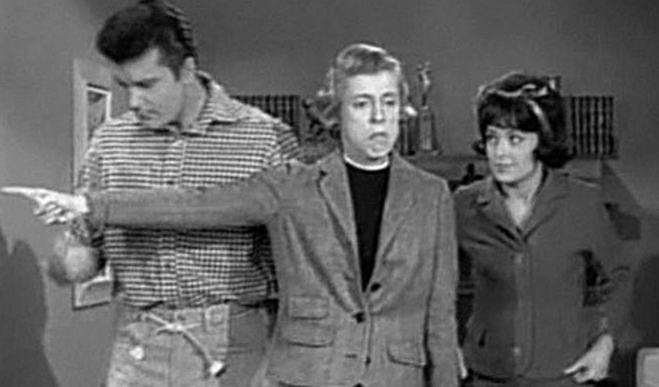 Television screenshot, Wikimedia Commons
Television screenshot, Wikimedia Commons
Copyright Issues
There was an interesting catch, however. While those episodes themselves were copyright-free, the theme song had its own separate copyright, meaning the free copies of the show could not use the theme. Generic banjo music was used instead and given the inferior resolution of the copies of copies, these bargain basement tapes were very cheap and of low quality.
The Theme Song
The Beverly Hillbillies theme song is a television classic. Generations raised on the first run and syndicated reruns of the show know the words. True to its place as one of the rural-themed shows of the 1960s, the theme is a banjo-driven bluegrass story-song. The words tell the rags-to-riches tale of the Clampett family, and like many theme songs over the decades, it introduces the concept of the series, setting the viewer up for what to expect.
The Theme Song
The song, titled “The Ballad of Jed Clampett”, was written by the series creator Paul Henning and performed by bluegrass legends Lester Flatt and Earl Scruggs. Released as a single in 1962, the song reached number 44 on the Billboard Hot 100 chart, and it landed at number one on the country chart. The first two verses introducing Jed and the family, and how they became millionaires, play over the opening credits, while a third verse is essentially a farewell (“Now it's time to say goodbye to Jed and all his kin…”) and it plays over the end credits.
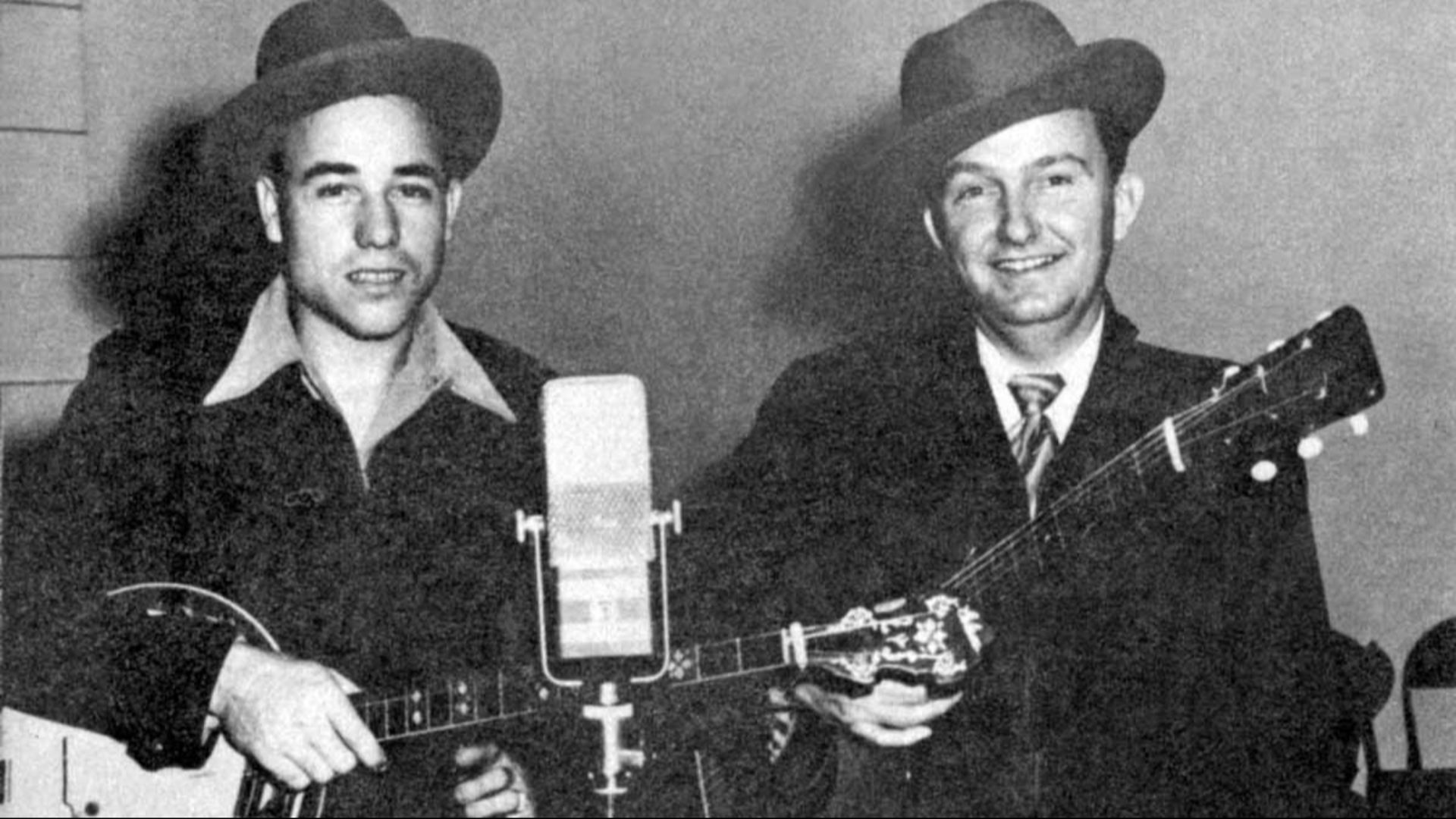 Unknown author, Wikimedia Commons
Unknown author, Wikimedia Commons
Product Placements
Television advertising in the 1950s often meant that a show was sponsored by one brand and the use of the product would be incorporated into the show (I Love Lucy was sponsored by tobacco giant Philip Morris, requiring smoking to be part of almost every scene) and the cast would often directly promote the product to viewers. The practice began to shift in the late 1950s towards commercials not connected with a show, but direct sponsorship continued for some time.
Product Placements
Kellogg’s Corn Flakes was one of the main sponsors of The Beverly Hillbillies and at the end of an episode, their jingle “K-E-Double L-O-Double Good. Kellogg's best to you” would be used to remind viewers of Kellogg’s sponsorship. Cast members in character would shoot promotional segments (directly talking to the audience) and would also be part of the commercials themselves. The show’s theme would also be extended in the opening credits with altered words promoting Kellogg’s.
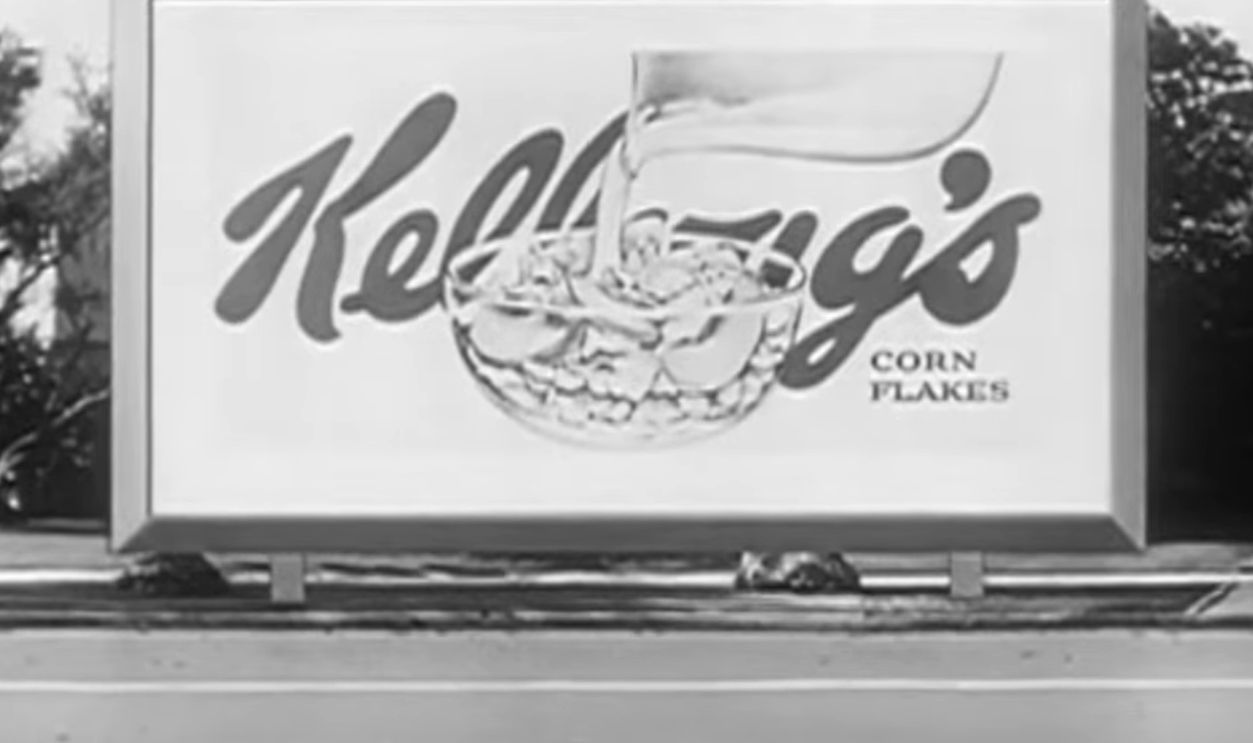 Classic TV Theme: The Beverly Hillbillies, David Gideon
Classic TV Theme: The Beverly Hillbillies, David Gideon
The Mansion
The mansion used for the Clampetts’ new Beverly Hills home was actually in Bel-Air. The house belonged to a real estate investor and art collector. The show was permitted to use the property on the condition that the location be kept secret.
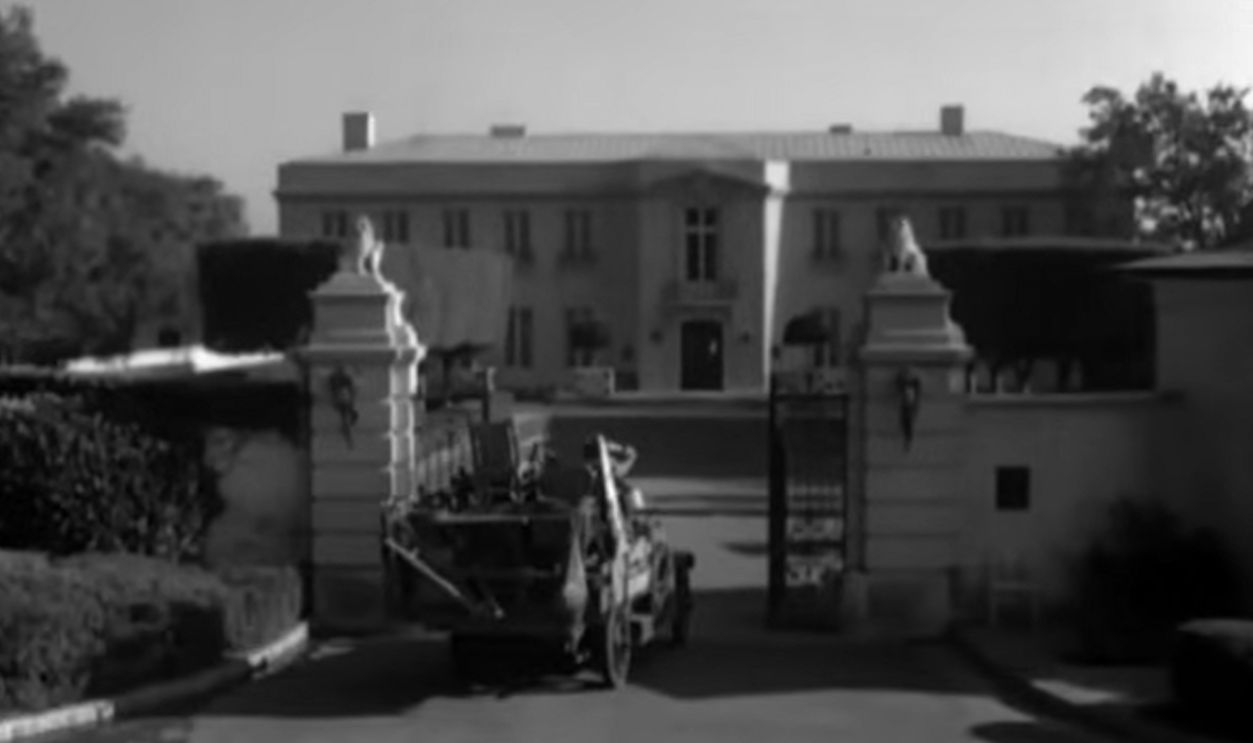 0101 The Clampets Strike Oil, Full_Strength_Beer
0101 The Clampets Strike Oil, Full_Strength_Beer
The Mansion
That proved to be a difficult task given the constant presence of a film crew. Soon, the outside of the house was so familiar that it became obvious that it was the Clampett house. Once the actual address was revealed (this was pre-Internet of course, but word still got around) the location became a tourist hot spot.
 Beverly Hillbillies Mansion Could Be Yours for $195M, Inside Edition
Beverly Hillbillies Mansion Could Be Yours for $195M, Inside Edition
The Clampetts’ Car
An iconic image from the opening credits is of the old jalopy piled high with the Clampetts’ Earthly belongings (in the same manner as famous documentary photos of dust bowl migrants heading to California during the Great Depression) and complete with Granny sitting on a rocking chair perched on top. This image has been parodied in The Simpsons and remains a symbol of backwoods migration to the West Coast. The actual car was a 1921 Oldsmobile Model 46 Roadster purchased for $2,000 in 1962.
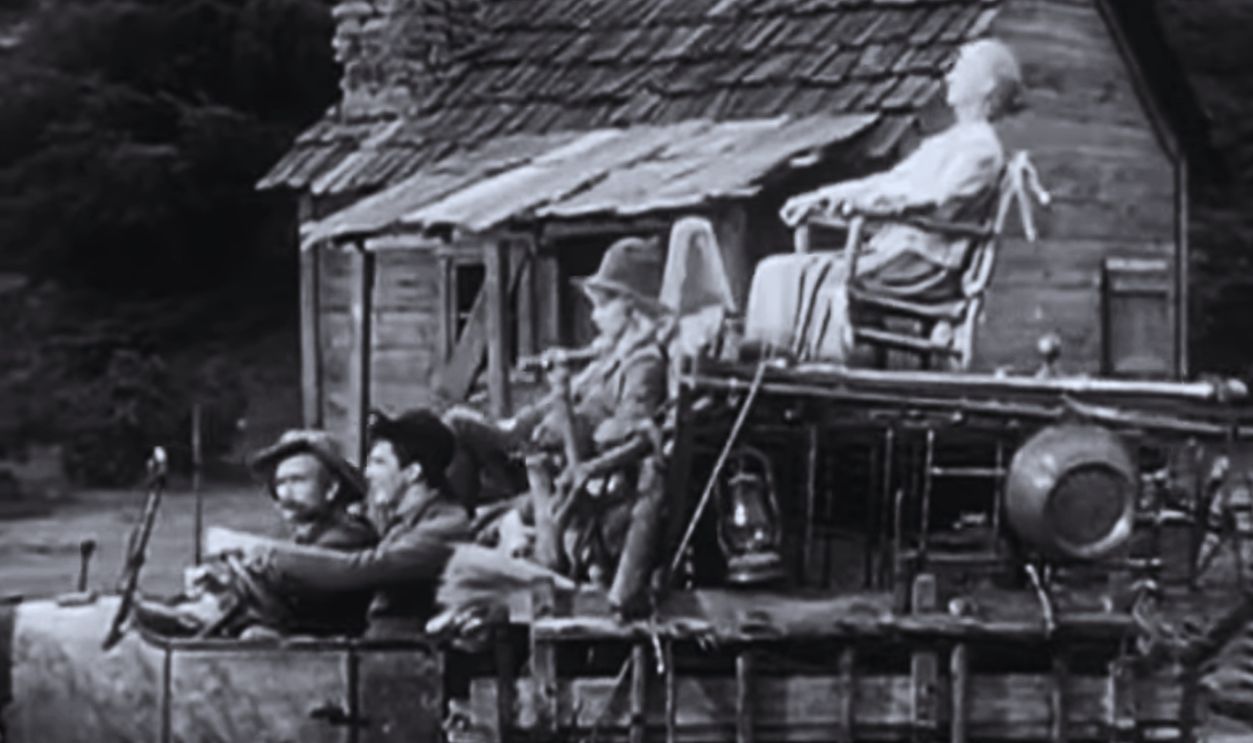 Classic TV Theme: The Beverly Hillbillies, David Gideon
Classic TV Theme: The Beverly Hillbillies, David Gideon
The Clampetts’ Car
The vehicle had a V8 engine and was modified to include cylinder cups specifically designed to start easily, with the help of a bit of ether, in cold weather. Cold weather starting capabilities were not needed for Southern California, but the ancient car suited the needs of the production to look like a car purchased a long time ago and kept running out of necessity. In 2015, the car was put up on auction and sold for $275,000.
Jed Clampett
Before starring on The Beverly Hillbillies as Jed Clampett, Buddy Ebsen was seriously considering retirement. Ebsen had a long career at that point, beginning as a singer and dancer on Broadway in the 1920s. He signed with MGM in the 1930s and appeared in numerous films, both musicals and non-musicals.
Jed Clampett
Ebsen was cast in The Wizard of Oz as the Tin Man, shooting a few scenes at the beginning of production. He began having serious breathing problems and it was determined that the metallic makeup used for the Tin Man costumes, which contained aluminum, was toxic, leaving Ebsen with respiratory problems for the rest of his life. An experienced sailor, Ebsen trained naval cadets during WWII and after being turned down for a US Navy commission, he was accepted as an officer in the US Coast Guard.
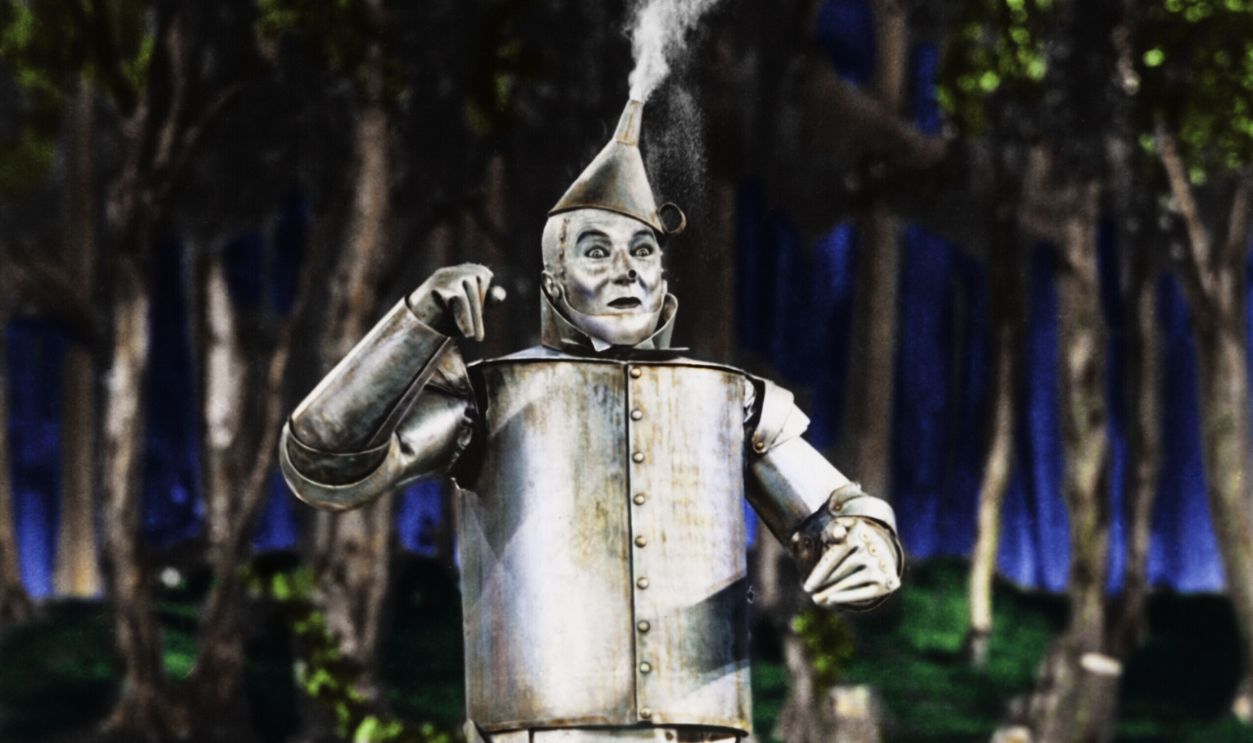 Silver Screen Collection, Getty Images
Silver Screen Collection, Getty Images
Jed Clampett
After WWII, Ebsen returned to acting and for the next 17 years, appeared frequently on television in both dramatic and Western roles. His highest profile film role was Doc Golightly, a country veterinarian deserted by his much younger wife, Holly Golightly, in Breakfast at Tiffany’s. Ebsen was considering retirement when he was offered the role of Jed Clampett, which he eventually accepted on the condition that Jed be reworked from a dim-witted rube to an intelligent and kind-hearted patriarch.
Granny
Irene Ryan memorably portrayed Daisy Moses, usually referred to as Granny, who was Jed’s mother-in-law. Granny was the mother of Jed’s deceased wife, Rose Ellen, although Buddy Ebsen was only five years younger than Ryan. Granny was from Tennessee and was a proud Confederate and a practicing MD (mountain doctor), using her “white lightning” moonshine as an anesthesia to perform leeching and tooth pulling.
Granny
Before being cast as Granny, Ryan competed with Bea Benaderet for the role. Ryan, being from Texas (Benaderet was from New York City), was better suited to the rural Southern character. Almost 60 when the show debuted in 1962, Ryan was made up to look much older and her natural Texas accent was exaggerated to give it a broader “hillbilly” twang.
Granny
The show’s creator, Paul Henning, was nevertheless impressed with Benaderet's take on the Granny character. She was later cast in a guest role as Jethro’s mother, Cousin Pearl. The character Kate Bradley in another rural comedy, Petticoat Junction (also created by Henning), was written specifically for Benaderet.
Elly May
Elly May was Jed’s only child. She’s portrayed as a tomboy which is meant to contrast with her sexy country-girl appearance. Although clearly in her 20s, Granny tells people she’s 14 because in the Ozarks, an unmarried woman of Elly May’s age is an old maid.
Elly May
A key character trait is her love of animals, and many animals were featured in the series under Elly May’s care. On set, the animals were handled by Hollywood animal trainer Frank Inn. Many of the animals were taught by Inn to respond to Elly May’s vocal directions on screen.
Elly May
Elly May’s signature wardrobe consisted of flannel blouses with snug blue jeans. In the early 1960s, jeans were still not commonly worn by women, but Elly May’s look inspired a trend as denim jeans became popular with women. A Levi Strauss executive claimed that Elly May had “done more for the sale of blue jeans in one year than cowboys have done in a hundred”.
Jethro Bodine
With Jed Clampett being reworked into a responsible and intelligent father figure for the Clampett clan, the dim-witted but sweet rube trait was emphasized for the Jethro Bodine character. Portrayed by Max Baer Jr, Jethro was the son of Jed’s first cousin Pearl (Jed’s father and Pearl’s mother were siblings). Jethro initially drives the Clampetts to California, but he ends up staying to further his education—at the beginning of the series, the adult Jethro is in fifth grade, having spent three years in grade four and two years in grade one.
Jethro Bodine
Jethro manages to finish the sixth grade, and he is proudly introduced by his family as a “sixth-grade graduate”. After his successful run as Jethro, Baer found himself typecast and eventually shifted his career to the business world. Capitalizing on his identity as Jethro, Baer, with permission from CBS, used his character for commercial appearances, especially for a restaurant chain.
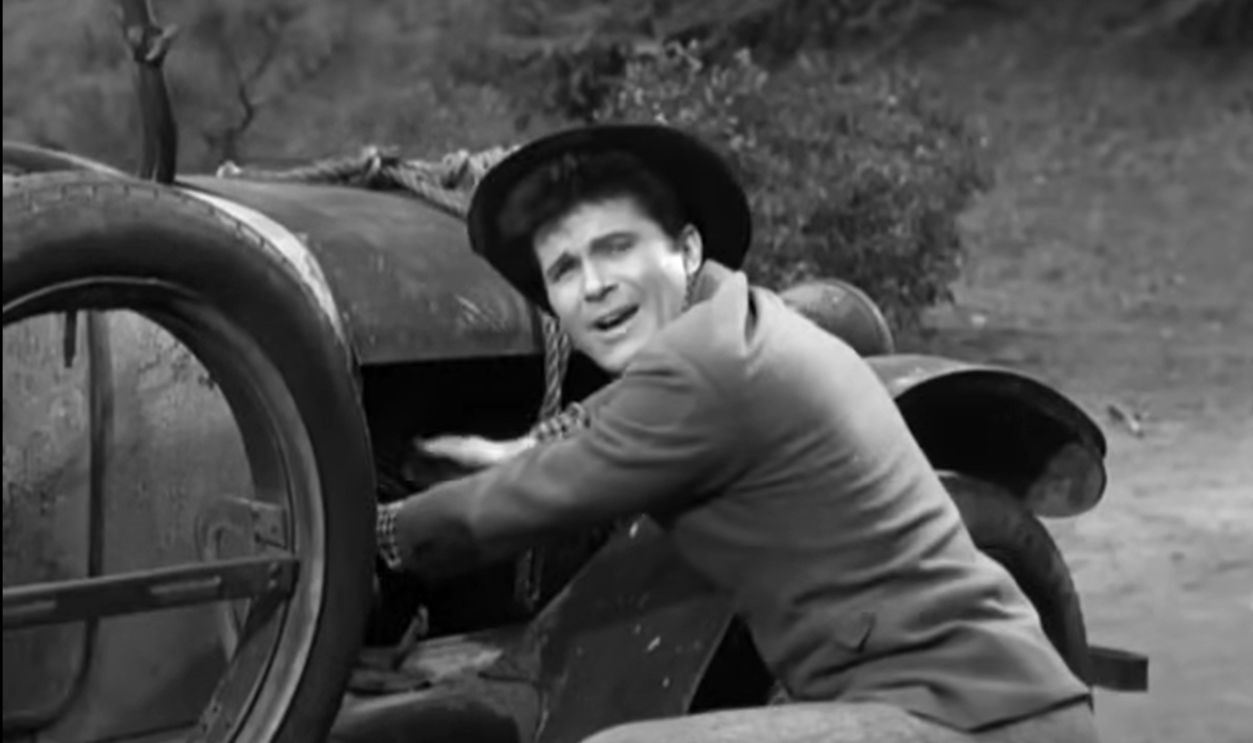 0101 The Clampets Strike Oil, Full_Strength_Beer
0101 The Clampets Strike Oil, Full_Strength_Beer
Mr Drysdale
Raymond Bailey portrayed anxiety-driven Mr Drysdale, who was both the Clampetts’ neighbor and Jed Clampett’s banker. As his bank held the Clampett fortune, Mr Drysdale and his snobbish wife found themselves intertwined with the Clampetts’ lives. Towards the end of the show’s run, Bailey began showing signs of Alzheimer’s disease, and after completing two films, he retired from acting and passed away in 1980.
Jane Hathaway
Jane Hathaway, played by Nancy Kulp, was Mr Drysdale’s well-educated and efficient secretary. She has an unrequited crush on Jethro and is genuinely fond of the Clampetts, often helping them out when her boss’s money schemes threaten the Clampetts’ wealth or well-being. In 1984, Kulp ran for the US Congress as a Democrat and although Buddy Ebsen did not live in her district, he recorded attack ads on behalf of Kulp’s Republican opponent, a betrayal for which she never forgave Ebsen.
Sharon Tate
Before her horrific murder in 1969 at the hands of Charles Manson’s “family”, Sharon Tate had a recurring role in The Beverly Hillbillies, appearing in 15 episodes between 1963 and 1965. She portrayed Janet, a secretary at Mr Drysdale’s bank. Jethro was particularly taken with Janet, although she didn’t return his affection.
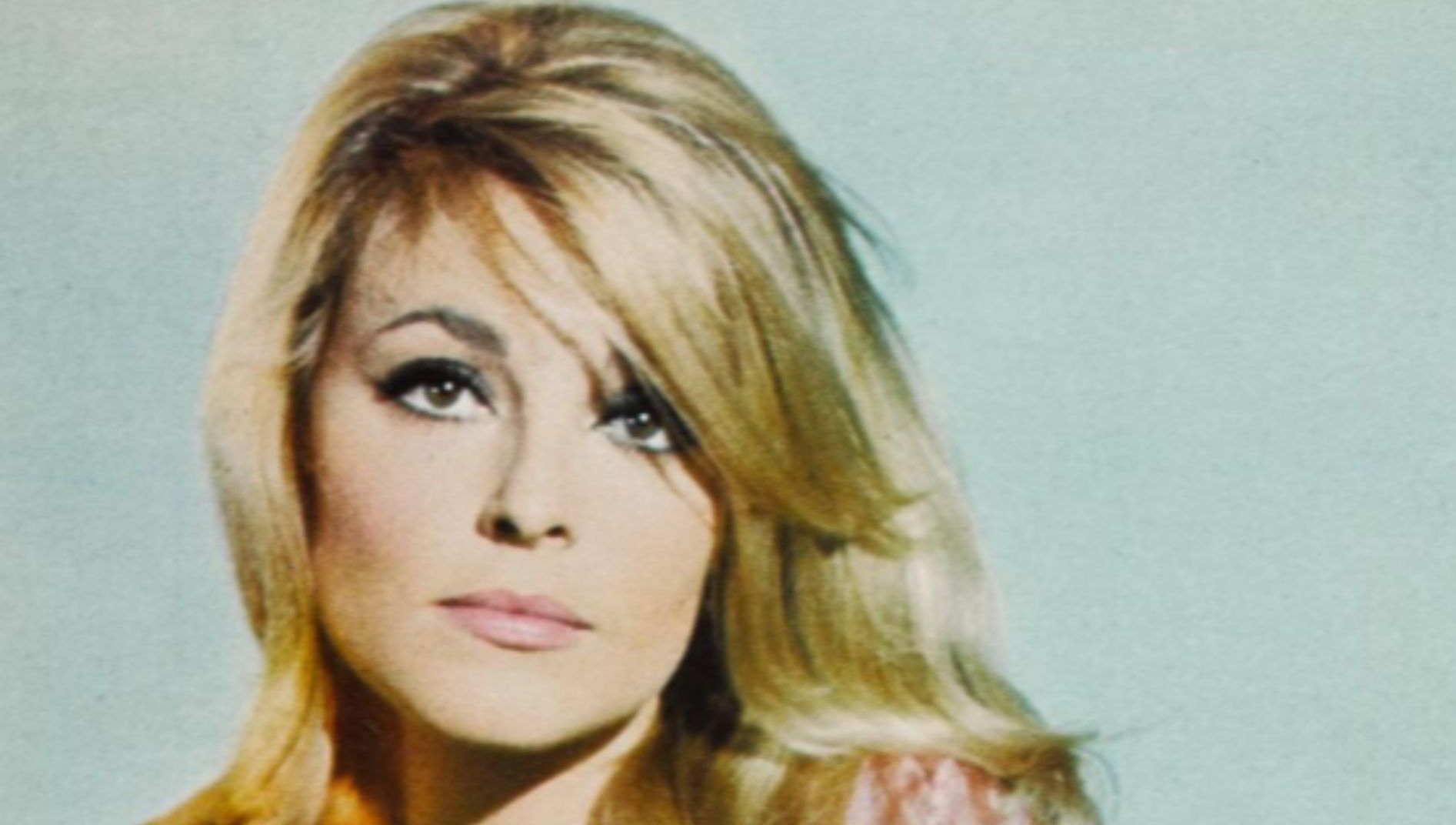 Unknown authorUnknown author, Wikimedia Commons
Unknown authorUnknown author, Wikimedia Commons
Jed’s Hat
Jed Clampett’s beat-up fedora was an iconic visual part of the show. Despite their wealth and living in Beverly Hills, the Clampetts retained their backwoods wardrobes and Jed is rarely seen without his hat. The hat itself was Ebsen’s; he had brought it from home for his character and the condition of the hat was genuine wear and tear.
Jethrine Bodine
Jethro had a twin sister named Jethrine who appeared in 11 episodes during the show’s run. Jethrine was portrayed by Max Baer Jr in drag while the character was voiced by Linda Kaye Henning. Henning was the daughter of the show’s creator Paul Henning.
Granny’s Cookbook
Granny’s cooking was central to the family’s life in the mansion, and she maintained their down-home roots with her meals. In 1966, Granny’s Hillbilly Cookbook was published and although Irene Ryan had nothing to do with the book other than the use of her images, the cookbook contained real recipes taken from various Southern cuisines. And yes, there was a recipe for possum pie included.
The Elly May Barbie
In 2010, Mattel released an Elly May Barbie doll with the use of actress Donna Douglas’ image on the packaging. Douglas sued CBS and Mattel for failure to ask for her consent and for not paying for her likeness. The lawsuit was settled out of court for an undisclosed amount.
Plagiarism
In 1965, CBS employee Hamilton Morgen sued CBS for $15 million, claiming The Beverly Hillbillies was based on his own concept for a show that he had pitched to CBS called Country Cousins. The case dragged on for almost 10 years and in 1974, a “stipulation of discontinuance” was filed jointly by CBS and Hamilton Morgen settling the case and with Morgen being awarded an undisclosed sum. Morgen claimed that CBS had demoted him from cameraman to a more menial job loading film after he asked for compensation for his idea in 1965.
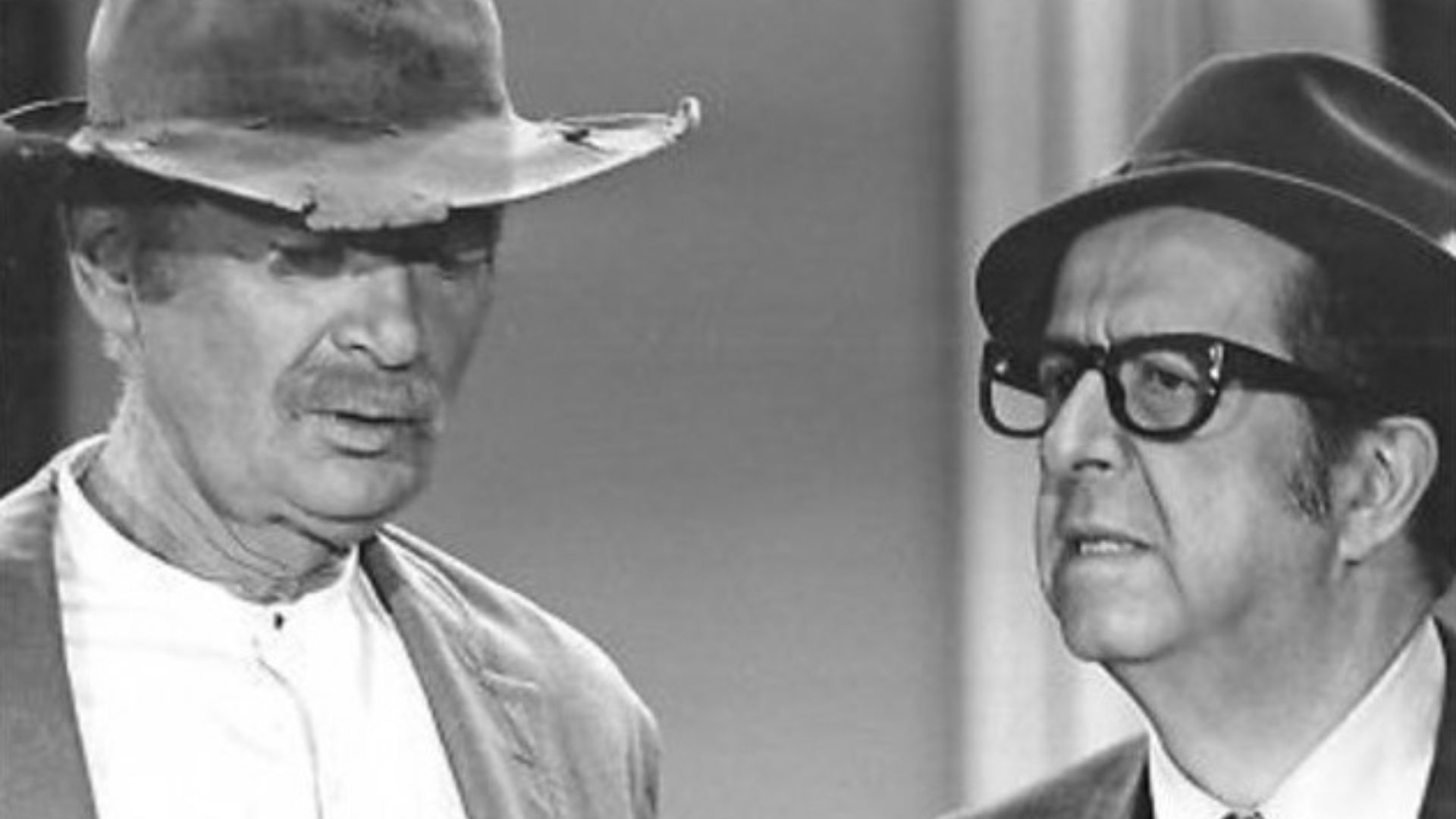 CBS Television Uploaded by We hope at en.wikipedia, Wikimedia Commons
CBS Television Uploaded by We hope at en.wikipedia, Wikimedia Commons
Granny Jethro Was Real
Jethro was portrayed as a sweet but dimwitted oaf who often attracted the ire of an impatient Granny. Irene Ryan was a fairly small woman but when Granny slapped Jethro for doing something stupid, the slap to Baer was real. Baer Jr was the son of former World Heavyweight Champion Max Baer, and the younger Baer told Ryan to give it her all during those scenes.
The Beverly Hillbillies Was Supposed To Be Science Fiction
When Paul Henning was first pitching his concept, the show was about a rural family from 1860 who time-travel to contemporary New York City. The science-fiction premise wasn’t the main issue: the show was originally to be shot on location in New York but to save money, the premise was changed to Beverly Hills and Henning decided that a suddenly rich family from the Ozarks would be funnier.
You May Also Like:
Behind The Scenes Of Bewitched
Behind The Scenes Of I Love Lucy

